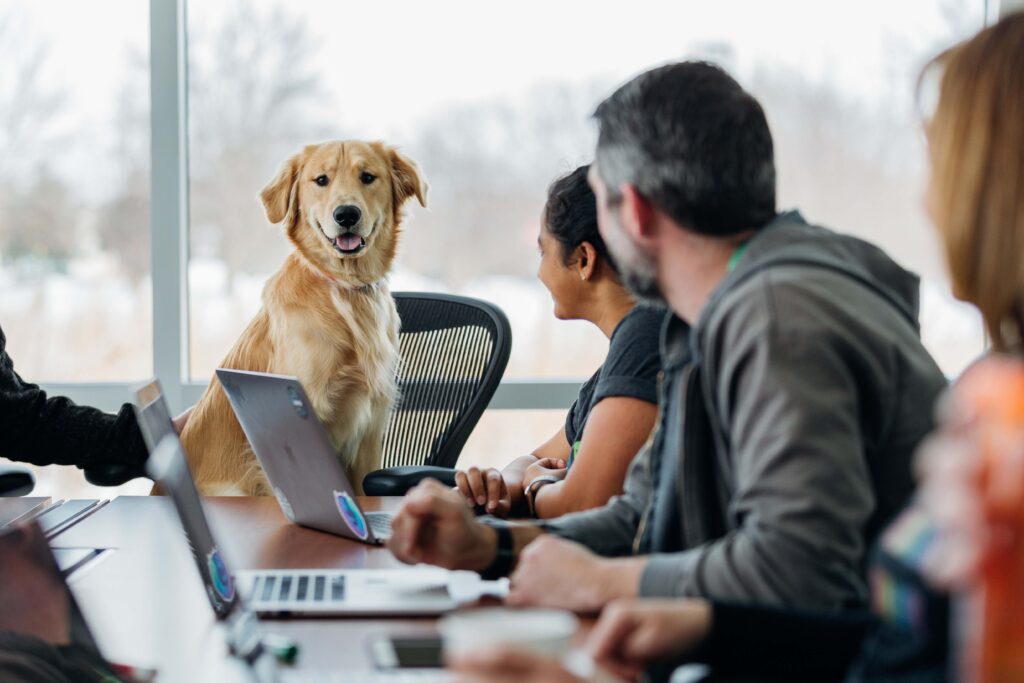
Many of us have worked from home over the past year with our best furry friends beside us, giving encouragement and comfort on the toughest of days. It’s understandable for those people that going back to the office without their canine companion could be nerve wracking and upsetting. For the dogs who are now used to constant company, new spouts of being home alone could lead to anxiety and stress. But what if there was a better solution? What if your workplace was dog-friendly? Read on as we take a look at the benefits for all parties…
How do dogs improve our mood?
It’s no secret that dogs, and pets in general, are good for our physical and mental well-being, whether that be through easing loneliness, encouraging exercise, or reducing anxiety, stress and depression. You might have felt it yourself when returning home to your dog, or perhaps going to visit a friend’s new puppy. Interacting with dogs increases our levels of the hormones oxytocin and serotonin, which are important for the regulation of stress and anxiety and also improve our mood and happiness.
Having a dog present in an office environment can significantly elevate the mood, while also improving communication, reducing tension and increasing productivity!
Can a dog-friendly workplace benefit employers?
Not only will your boss enjoy the mood-boosting benefits of a new four-legged colleague, they may also begin to notice some practical benefits for their business too.
For some employees, especially those who have been working from home for a long time now, going to the office requires someone to look after their dog, perhaps hiring a dog walker to take them out or even a hurried trip home in their lunch break to check on their dog. Understandably, this in itself can be a cause of stress for any dog owner, and being able to take their dog to the office with them is a huge job-perk which could be hard to walk away from. Could a dog-friendly office actually improve employee retention? Woof!
Do dogs enjoy going to the office?
Obviously it’s not all about us. If you’re going to be taking your dog to the office you also need to consider whether he/she will be comfortable with the new environment.
If you’re thinking about taking your dog to work for the first time, you may have to accept that the first few trips won’t necessarily be a walk in the park! Start slowly if you can, introducing your dog to colleagues and spaces gradually so as to not overwhelm them. Have a bed next to your desk so your dog can see you at all times and reward them with treats and pets regularly.
Maybe not after the first visit, but hopefully soon your dog will relax into the new environment just as if they’re at home, and new faces, sounds and smells will no longer be a cause of excitement or stress. Instead, they will feel the benefits of being close to you, just as you do!
What should you consider before taking your dog to the office?
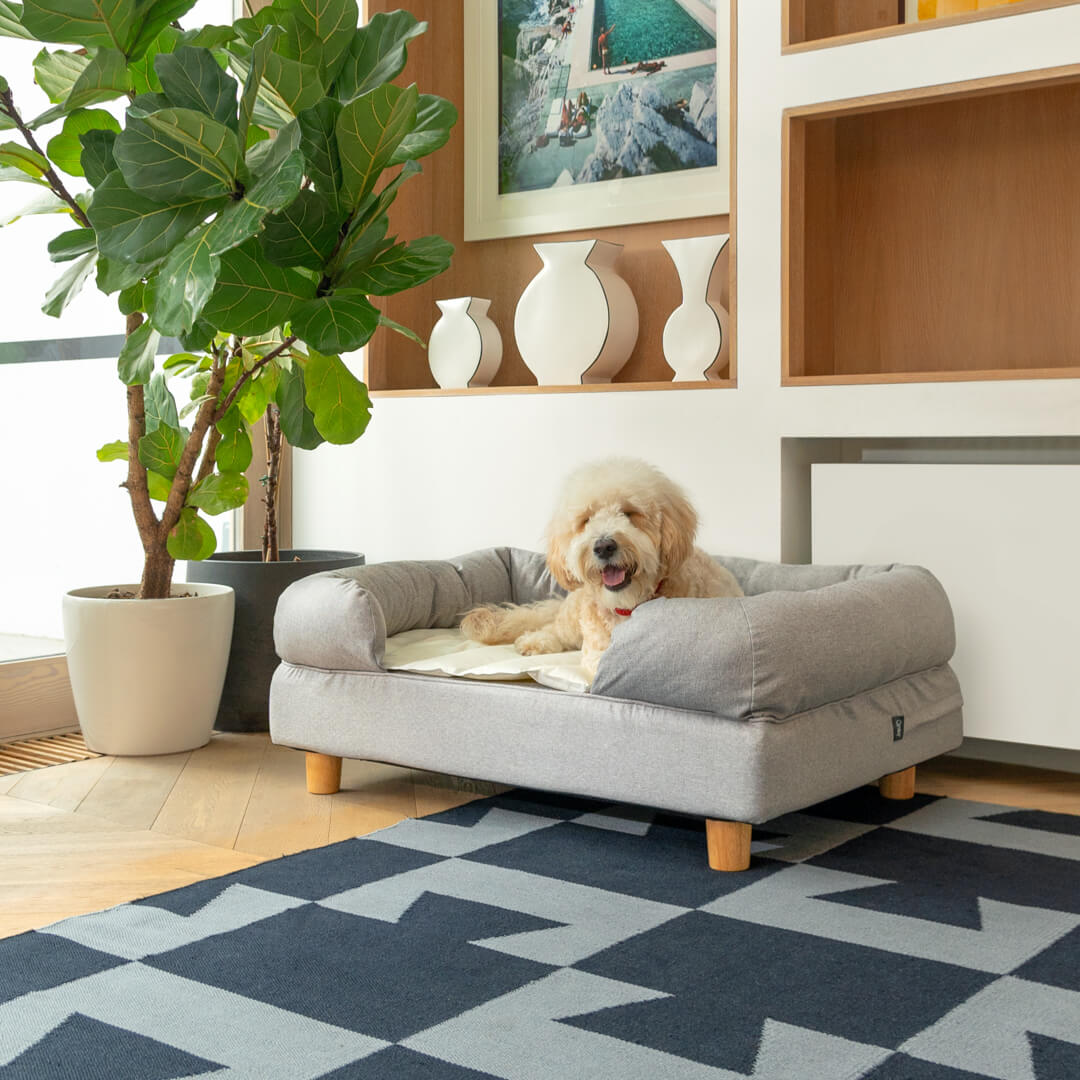 If your boss has given the green light to bring your dog to the office, there might be some things to check before going ahead. Of course, check in with your colleagues that no one has allergies or is afraid of dogs. If other colleagues are also going to be bringing their dog to the office, consider whether your dog will be okay with that, or if it could cause some stress.
If your boss has given the green light to bring your dog to the office, there might be some things to check before going ahead. Of course, check in with your colleagues that no one has allergies or is afraid of dogs. If other colleagues are also going to be bringing their dog to the office, consider whether your dog will be okay with that, or if it could cause some stress.
Make sure you can schedule breaks in your day to take your dog outside to stretch their legs and go to the toilet – this fresh air time is also great for your own well-being. Make sure you have everything with you, including treats, poo bags, a water bowl and a comfy bed where your dog can feel comfortable and relaxed. You may wish to keep a set of these items at the office if you’ll be bringing your dog with you regularly.
Whether or not you decide to take your dog to the office, the most important thing is that your dog is happy and comfortable. If you are returning to full time office working, consider your options to decide what’s best for your dog.
This entry was posted in Dogs
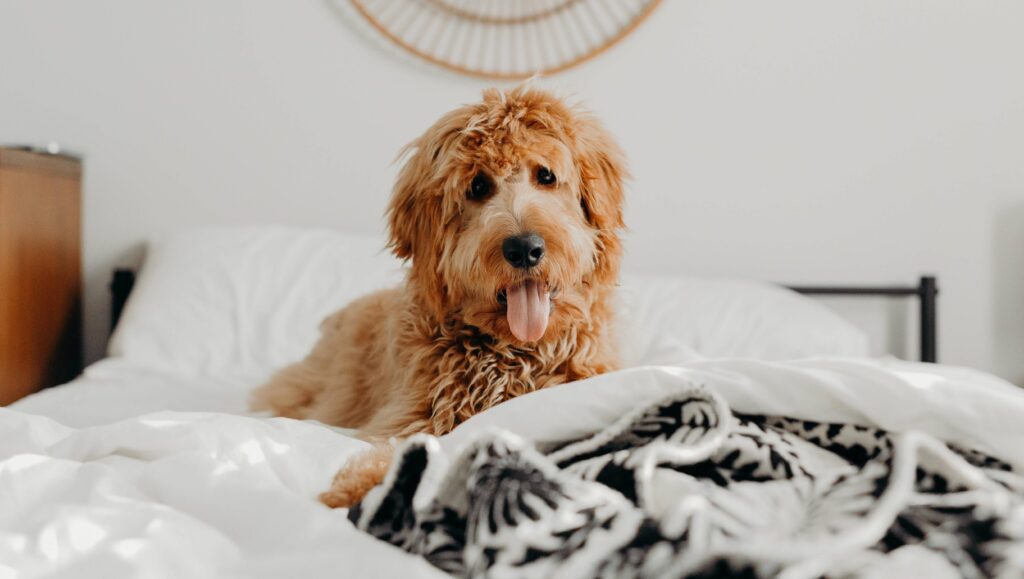
We all love our pets, and sometimes it simply seems far too difficult being apart for just a few hours, even at night. So with two thirds of Brits with cats or dogs now sharing a bed with their furry friend, it’s clear that the prospect of snuggling up with the cat or dog at bedtime can sometimes be impossible to resist. Many pet owners would agree that co-sleeping with a beloved pet seems harmless. However, with sharing the bed also comes drawbacks. First of all, though, let’s talk about the main benefits of letting your pet sleep on the bed.
Benefits of Sharing a Bed with Your Pet
Bonding
Sleeping with your pet can be a great bonding experience for both parties. Dogs and cats provide their owners with physical comfort and support, strengthening your bond and relationship, which can help your pet to feel more at home.
Security
For dog owners in particular, sharing your bed with your pet every night can be a great security measure if you have any concerns about break ins. Regardless of how your dog would react to any intruders, they’re a great deterrent to any burglars and provide you with a sense of safety at night. Although your cat might not be able to put up much of a fight against any intruders, they’re highly sensitive creatures and can alert you of anything that appears suspicious, such as unusual smells or sounds.
Reduces Stress and Anxiety
Studies show that co-sleeping with your pet can help elevate your mood and reduce stress and anxiety levels. When you cuddle with your dog or cat, having that contact releases the happy hormone of oxytocin. Reduced levels of stress and anxiety levels may also help you to get a better night’s sleep.
Personal Alarm Clock
Like humans, cats and dogs sleep at night and are awake for the day (well, for the most part!). They’re both creatures of habit and love routine so don’t be surprised if you get a very personal wake up call from your pet at 6am every morning. Look on the bright side though, you might never have to set an alarm for work ever again!
Drawbacks of Sharing a Bed with Your Pet
Fleas and Parasites
Unfortunately, cats and dogs are notorious for fleas. If you regularly welcome your pet into bed for a snuggle at night, then you may also be welcoming their fleas too. Although easily treated, having fleas is an unpleasant experience for both you and your pets. More worryingly, co-sleeping with your pet could actually be putting your health at risk. Both dogs and cats can spread parasites such as tapeworm, that can make us sick.
Hair!
If your cat or dog is prone to shedding then don’t expect your bed to escape from the mess! It’s no secret to most pet owners how much of a nightmare it can be to forever be hoovering up your dog or cat’s fur from around the house, so if you don’t fancy adding another chore to the list then maybe it’s best to avoid sleeping with a dog or cat.
Allergies
It’s not a good idea to share the bed with your pet if you suffer from allergies, even if they’re not pet related. Those who suffer from asthma or are sensitive to pollen and dust for example, may find their allergies being triggered from sharing the bed with a dog or cat.
Behavioural Problems
When you allow your animals to share the bed, you run the risk of facing behavioural problems. For dogs that are prone to separation anxiety or territorial aggression, allowing them to sleep on the bed at night could only be worsening these issues. Cats can also suffer from issues such as territorial behaviour, so if you’re met with a hiss or lash out from your cat when you attempt to move them off the bed then it’s probably not a great idea to continue sharing.
If you (or your pet) do decide to sleep alone, it’s important to make sure that you provide them with a safe and cosy bed at night. Omlet stock a wide range of pet beds for dogs and cats that optimise comfort and hygiene, so that your cat or dog will be just as snug in their own space.
If you (or your pet) do decide to sleep alone, it’s important to make sure that you provide them with a safe and cosy bed at night. Omlet stock a wide range of pet beds for dogs and cats that optimise comfort and hygiene, so that your cat or dog will be just as snug in their own space. The new Maya Donut Cat Bed offers first class comfort, made with a luxurious faux fur fabric your cat will love. Or how about trying the Topology Luxury Dog Bed for your pet pooch. With a memory foam mattress base, your dog will be in their element with a number of customisable toppers to fit their personality.
So, as amazing as it can be to share the bed with our favourite furry friends, with risks such as behavioural issues and allergies to consider, the decision really is a matter of personal choice. Either way, it’s always worth investing in your pet’s own bed to give them the option to have their own safe space (however little or often it may be used!).
This entry was posted in Dogs
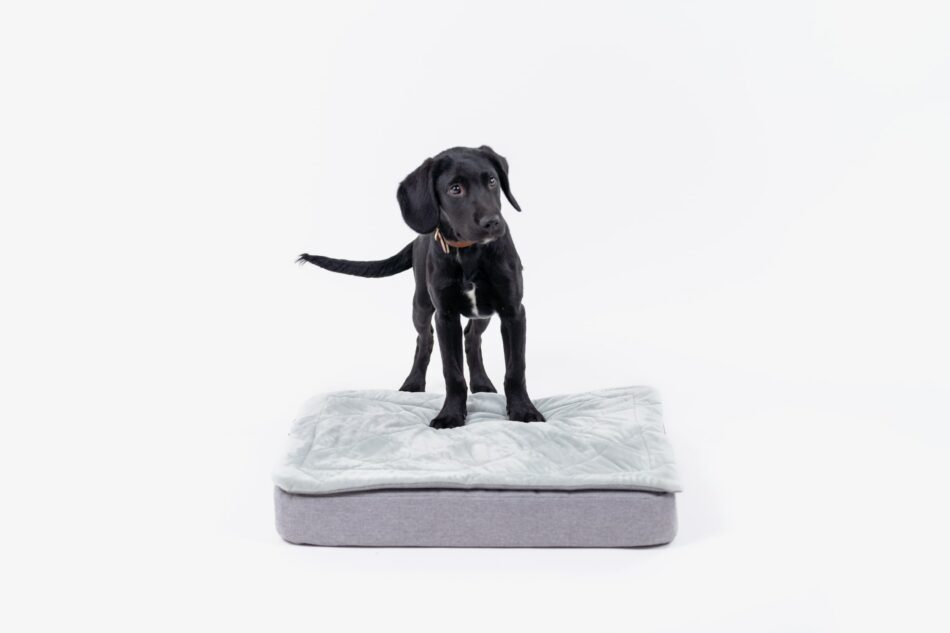
Choosing the right dog bed for your puppy can be tricky – or at least it used to be…Omlet’s Topology dog beds tick all boxes for your new best friend’s nap time needs, meaning you no longer need to compromise on what your puppy truly wants. Say goodbye to flimsy mattresses, chewed-up toppers and bad bed odours and discover why Topology is the perfect solution.
Comes in three different sizes
Depending on your dog’s breed, your puppy might be super small at the moment, but they’ll quickly grow up to be a full-sized dog before you know it. And since the Topology dog bed is the last you’ll buy, we recommend buying a bed based on their predicted measurements as a fully-grown adult dog. You want to make sure that your dog will be able to fit on the bed in all possible sleeping positions. The bed might look comfy when they’re curled up into a furry little ball, but would they be able to stretch out their legs if they wanted to? As they grow older you’ll find which positions they tend to sleep in, but for now, it’s best to go slightly bigger to be on the safe side.
The Topology dog beds come in three sizes to accommodate all breeds and are designed to fit snugly into standard-sized crates, avoiding any gaps along the sides. Just be sure that if you’re planning on dog crate training and want to put your bed in the crate, check your dog’s crate dimensions to ensure it fits. Take a look at our dog size guide so that you can match your breed to the right bed.
Choose from a range of removable toppers
The genius of the Topology design means that you can choose a range of versatile dog bed toppers which can all easily be removed to put in the wash, reducing odours and improving home hygiene.
For puppies, we recommend the Quilted topper, designed by Omlet with razor-sharp puppy teeth in mind. This super soft topper means optimum comfort for dogs of all ages and the durable fabric with the option to zip a puppy pad underneath, makes this style perfect for growing dogs. We’ll even replace your Quilted topper or mattress cover for free should your puppy chew through it within the first 6 months under our 180 Day Puppy Guarantee*.
Whilst your Quilted topper is being washed clean, you can choose an extra topper to zip onto your Topology dog bed. The Sheepskin topper is ideal for smaller puppies that might need a bit of extra warmth, transforming their bed into a cloud of tranquillity. Plus, you can pick from five different colours of this luxurious topper to match your home decor.
Minimise chewing damage
All puppies will chew – there’s no way around it. Dog breeds such as Golden Retrievers that are bred to use their mouths to fetch and carry are more likely to destroy anything that comes in their way, as well as breeds with a high prey drive.
You can of course train your puppy from an early age to only chew appropriate dog toys or other accessories, but if they do manage to get those sharp teeth into their bed, the design of the Topology Puppy Bed means they’ll likely be unsuccessful in getting through the topper or mattress.
No need to worry about dirt and accidents
Puppies get into all sorts of mess, so being able to zip off the topper and put it in the washing machine will make your life a lot easier, and your dog will appreciate having a fresh bed to return to.
This goes for puppy toilet accidents as well. If there’s a leak, the mattress under the topper has a waterproof cover that you can easily remove and wash with the topper. If this becomes a recurring problem, you can even put a puppy training pad on the mattress before your zip on the topper to soak up any accidents.
Provide premium comfort
Puppies sleep up to 20 hours a day, and it’s super important to give their growing bodies extreme comfort and support. Keeping your dog off the ground on a sufficiently padded surface can prevent severe arthritic pain in the future, so make sure you choose a good-quality bed.
Topology dog beds have a memory foam mattress that moulds around the body as the dog lays down on it, and provides amazing support for tired legs after vigorous play. The toppers all add extra comfort, either by super softness against the body, like the Quilted or the Sheepskin, or by extra padding like in the Beanbag or Bolster toppers.
Pick the perfect extras
If you decide not to place your puppy’s bed in a crate, you can elevate your Topology off the ground with a range of stylish feet. Raising your dog’s mattress reduces drafts and improves the airflow under the bed, which helps minimise a build-up of mould, mildew, dust and debris.
It’s also a good idea to add a blanket to the bed to make your puppy’s Topology dog bed for an even better night’s sleep. Simply place your Omlet Luxury Faux Sheepskin dog blanket on your puppy’s bed and they’ll soon learn to associate it with a safe and calm environment. This means that if you go away on holiday or have to take your puppy to the vet for their jabs, you can bring the blanket and give him or her an extra sense of safety.
Omlet and your puppy
We’re confident that your new puppy will love their Topology Dog Bed, and you can be confident knowing you’ll have a dog bed to last a lifetime with our 180 Day Puppy Guarantee. Plus, with accessories such as designer dog bed feet and super snug dog blankets, your furry friend will be sure to have their own puppy paradise for years to come.
*Click here for full 180 Day Puppy Guarantee T&Cs.
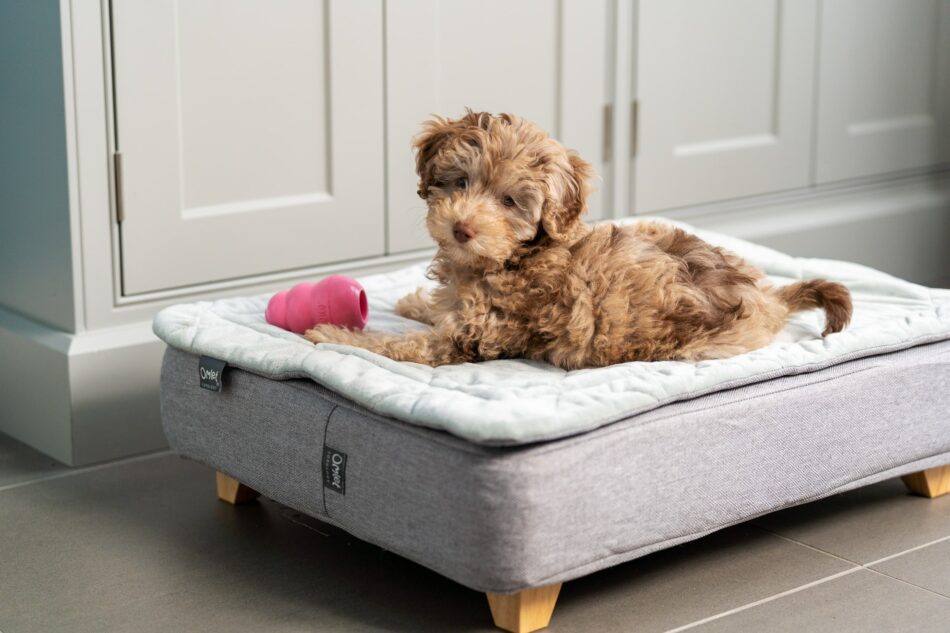
This entry was posted in Dogs
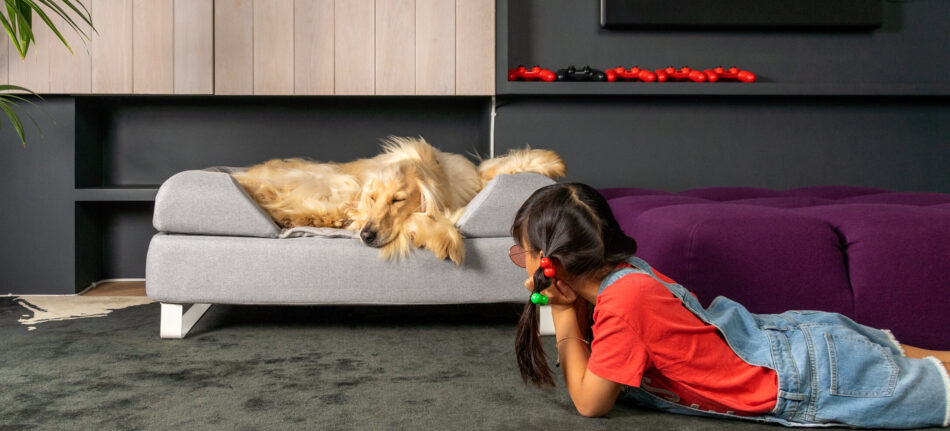
Washing a dog bed regularly can help to ensure your pet always has a clean environment. It also minimizes the risk of fleas, germs, and dirt build up. Our guide shows you how to easily wash your dog’s bed, as well as the best beds to keep your dog happy and healthy.
Why do dog beds need washing?
An unclean dog bed can cause serious problems for your beloved pet. Infections can be passed from dog poo and urine or anything the dog has regurgitated. The bacteria in these bodily discharges can linger in the mattress for several months. There are potential problems with an unwashed dog bed that a simple brush or vacuum-clean cannot tackle. Sleeping in this unsanitary condition could result in your dog becoming ill, with the knowledge to keep their dog bed clean you’ll be able to reduce this risk.
All dog beds provide a good night’s sleep for your dog, but the best ones do far more than that. They keep dirt and bacteria at bay and make the home environment healthier for everyone.
Dog beds become dirty and smelly over time. They can also harbour flea eggs or ticks. Washing them is essential, and this can be a simple or complicated task, depending on the type of dog bed your pet has.
Washing a dog bed with a removable cover is simple. Without a removable cover, a thorough clean becomes more challenging.
Simple steps to wash a dog bed with removable covers
Washable dog beds with a cover are easier to clean than ones without a cover. Our easy steps on how to clean a dog bed with removable covers will help you give your pet a sparkling bed in no time.
How to wash the dog bed cover
- Vacuum the dust and hair from the dog bed and dog blanket to prevent the fine hairs from clogging up your washing machine filter. A vacuum cleaner with an upholstery attachment is ideal.
- Remove the cover and vacuum the mattress and all other parts of the bed.
- The cover of the dog bed can then be washed, along with the blanket. Use a pet-safe washing liquid and, if needed, a stain remover.
Washing your dog’s mattress
Depending on the type of bed you have, you will sometimes have to wash the mattress of your dog bed too. A model like the Topology dog bed has a waterproof cover that keeps the dirt away from the mattress. Although there may be occasional leaks if the dog has soiled the bed, in which case the mattress will need washing.
- The dog bed mattress should be soaked in a bathtub of hot water using a pet-safe washing product.
- Alternatively, it can be soaked for 15 minutes in a tub of water in which two tablespoons of bicarbonate of soda have been dissolved.
- Some mattresses are pliable enough to be washed in a washing machine and dried in a tumble dryer.
- Otherwise, it will have to dry outside. Choose a warm sunny day if possible – easier said than done at certain times of the year! The important detail is to choose a well-ventilated area, which will prevent mould from growing as the bed dries.
Washing a dog bed without a cover
Even if your dog bed does not have a removable cover, you can still wash it with ease. The following steps detail how to hand wash your dog bed.
- First, hoover-clean the bed, getting into all the folds and corners.
- Next, use a brush to loosen any hairs caught in the dog bed’s fabric and then vacuum it again.
- Individual stains can be spot-treated with an enzyme-based cleaner before soaking the whole bed in hot soapy water for 15 minutes. Squeeze and turn the bed a few times during this time, to remove as much dirt as possible.
- If the bed is very dirty and the water turns brown, soak the bed for five minutes and then replace the water.
- The bed should then be scrubbed all over using a damp brush dipped in baking soda. Use a toothbrush for the folds, seams and corners. This will add the finishing touches to the cleaning and will also deodorize the dog bed.
- Fill the tub with warm water again and soak the dog bed, squeezing and kneading it to remove all traces of detergent.
- Repeat until the water shows no traces of soap bubbles.
- The dog bed can then be air-dried in a warm and well-ventilated place.
Omlet’s easy to clean dog bed
The perfect easy to wash dog bed is a waterproof one made with cleaning in mind. If it has a machine washable cover that zips on, the bed can be washed and dried within a few hours. This system also has the advantage of longevity, as a worn-out cover can be replaced.
Our Topology dog beds employ this system and come in various versions and colours, all machine-washable at 30C (85F). You’ll also find the Omlet Bolster Dog Beds have removable covers for easy washing too. By matching light and dark colours to your dog’s coat, the hair will be less visible. A minor issue, perhaps, but white hair on a dark mattress, or dark hair on a white bed, looks very messy. The Topology covers are also waterproof, which protects the memory-foam mattress underneath. They come in different sizes, too, to suit all breeds of dog. Topology beds also prevent dirt from accumulating around the bed or mattress, as they have frames with legs that keep the structure off the ground.
How often to wash a dog bed
Now you know how to wash your dog’s bed, you may wonder how often you should be cleaning it. Washing the dog bed cover once every week or so eliminates issues of dirt and germ build up. The frequency will depend largely on how much hair the dog sheds and how dirty it tends to get. If anyone in the household has a dog allergy, frequent cleaning is essential.
To kill any potential nasties lurking in the bedding, it will ideally need to be washed at 60C (140F). Although lots of dog bedding will have washing instructions recommending a lower temperature. A waterproof cover, which is a feature of the Topology range, prevents the mattress from soiling, and these covers can be washed at low temperatures.
Omlet petcare
Treat your dog to the accessories they deserve. Luxury dog crates that will help to crate train puppies as well as training adult dogs, to dog toys that will help build your bond, we have the items to make your dog comfy and happy.
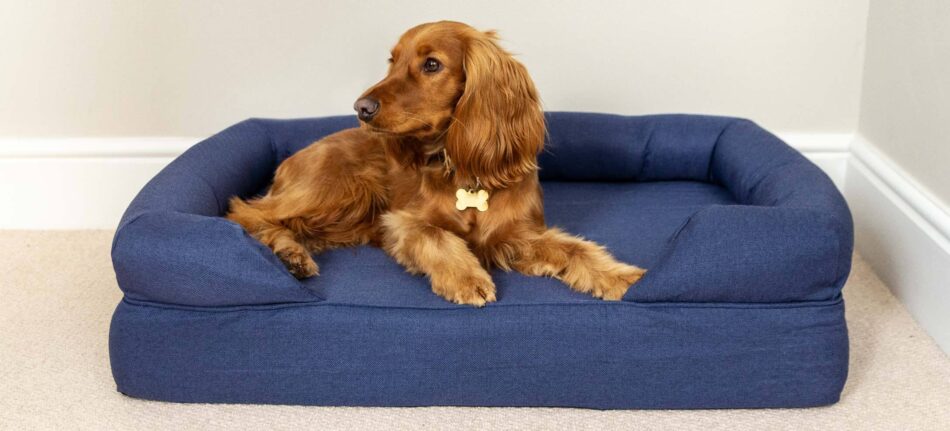
This entry was posted in Dogs
It is a common myth that dogs only see in black and white. This is not the case, although their colour vision is limited compared to humans.
In that case, you may now be wondering “well, what colours can dogs see then?”, and how exactly do we as humans know this?
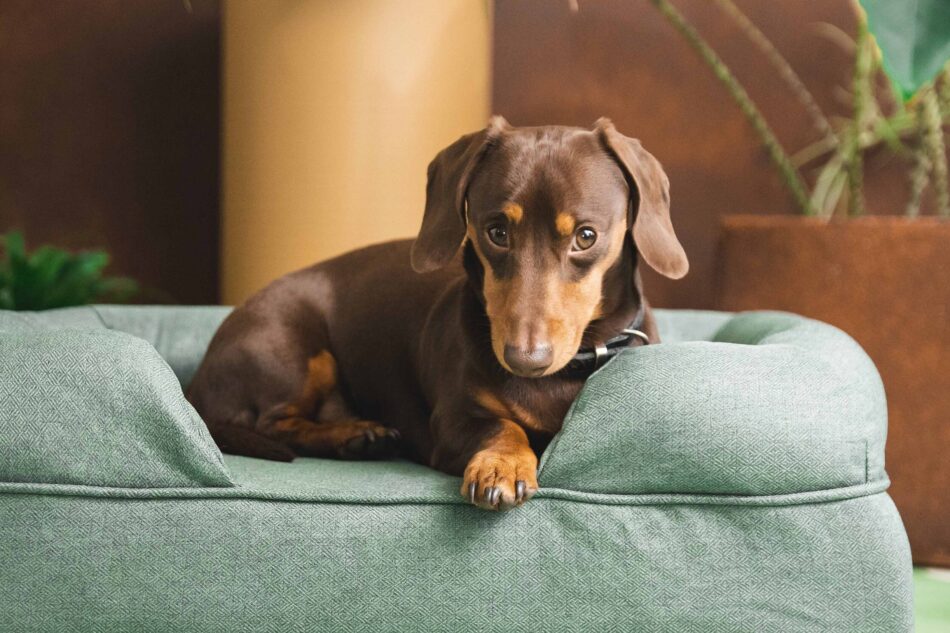
What colours do dogs see best?
The first question on your mind might be “what colours do dogs see best?”. Well, whilst the average person can see ‘all the colours of the rainbow’, from red to violet, dogs don’t have the same light receptors in their eyes as we do. To them, the rainbow is missing the red half of the spectrum. They can, however, see the yellows and blues. Indeed, a rainbow, to a dog’s eyes, is a series of yellows and blues of different shades.
What colours can dogs not see?
The ‘missing’ reds and oranges will appear to dogs as the various shades of light brown labelled ‘tan’. The greens in grass, trees and other plants are also tan to a dog. That bright red ball lying in the lush green grass may be very clear to you, but to your pet dog, the ball and the grass are both brown. Buy your dog a yellow or blue toy, however, and it will be as visible to your dog as it is to you.
Luckily for dogs, they rely on their sense of smell more than sight, so locating that ball in the grass won’t be so tricky, no matter what colour the toy is.
Can dogs see colours in their beds and toys?
As long as you don’t decorate your dog’s crate, Fido Nook or another cosy corner with reds, oranges and greens (which will all appear brown to a dog), they will appreciate a splash of colour. There’s nothing wrong with shades of tan either!
There is no evidence, either, that a dog prefers a blue or yellow ball to a red or green one. They will, however, be likelier to lose track of a light brown ball in the light brown grass.
How do dogs see colour?
In the earliest research into animal vision, dogs were taught to choose a disc that was a different colour from the others by touching the odd-one-out with their noses. If they chose the right one, they were given a treat – always a great incentive, as any dog owner knows! Sometimes, however, even the most well-trained dogs struggled to identify the odd-one-out. This told the researchers that the dogs were unable to distinguish between certain colours. When the discs were all red, apart from one green one, all the dogs could see were light browns!
Scientists are also able to use electroretinography to measure how animals’ eyes react to light. It was soon confirmed that key ‘cone cells’ responsible for registering colour in human brains were absent in dogs. Humans have three types of cone receptors, while dogs only have two.
Do dogs have good eyesight?
It may come as a surprise to many people that dogs, in addition to their poorer colour vision, cannot see as clearly as humans. Beyond a certain distance, everything becomes blurry for them. They have a genetic short-sightedness that prevents them from seeing distant objects clearly. The degree of short-sightedness varies between dog breeds, and it comes as no surprise to learn that so-called ‘sight hounds’ such as the Afghan Hound, Greyhound, Irish Wolfhound, Scottish Deerhound and Whippet have better eyesight than Chihuahuas, Pugs and Bulldogs. You can find out more about these wonderful breeds in the Dog Breeds Guide.
However, dogs’ eyesight comes into its own at dawn and dusk, when they can see just as well as they do in the daytime. Like cats, they have retinas that function well in poor light. The shape of their eyes’ light receptor cells and a reflective tissue layer at the back of the eye combine to create this low-light supervision.
And yes, that reflective layer is why dogs’ (and cats’) eyes always have a ‘red eye’ effect in photographs, and in car headlights. (Don’t worry though, we’ve got some top tips on How To Take Better Photos of Your Pets!). No wolf pack in a horror film would be complete without those glowing eyes!
Dogs also have a broader field of vision than humans, as their eyes are more on the side of the head than ours. This enables them to take in details that we would either miss or would be half-glimpsed things seen ‘in the corner of the eye’.
Why do dogs see less colour than humans?
Dogs evolved as hunters, just like modern wolves. On the one hand, this might make you assume that fantastic vision would be essential, as it is, say, in a bird of prey. However, the difference between a dog and an eagle is that the dog evolved to hunt at night, or dawn and dusk. A hunter doesn’t need full-colour vision at night, as colours simply disappear when the sun goes down. The key skill is to detect motion and to see things vividly in the half-light. In these respects, dogs’ eyes excel, and their eyes are super-sensitive to movement.
Humans, in contrast, evolved as daytime hunters, and that’s why we have better colour vision. At night, our eyes are hopeless without some kind of artificial light. At dawn and dusk, our brains have great difficulty identifying moving objects with certainty. That’s why ghosts, goblins and other supposedly supernatural sightings occur at these times of day – they are a function of our brain trying to busk in the half-light!
Human vision, then, contains more colour than a dog’s. However, we are certainly not top dogs when it comes to colour vision in the wider animal world. Many insects, including bees and butterflies, as well as many fish and crustaceans, have far more light receptors than we do and can see far more colours in the rainbow and the world around them.
But a dog’s vision is still perfect – for a dog!
We might see the world differently from our pet pooches, but what owner and pet can both agree on is that our furry friends deserve to live a life of luxury! Shop Omlet dog products today to find the perfect Dog Bed, Dog Crates and Dog Accessories for fido!
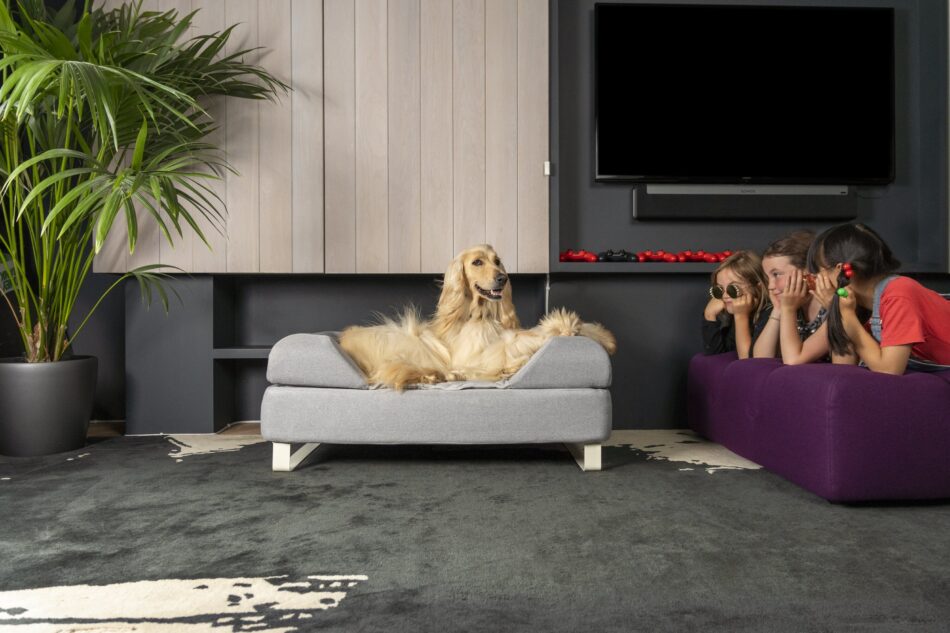
This entry was posted in Dogs
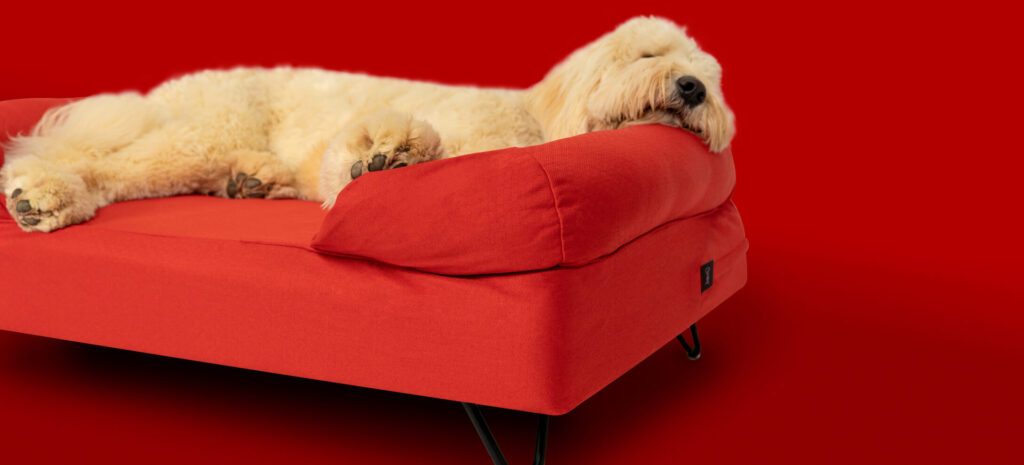
For years dog owners have been limited to beds in dull shades of brown, grey and black, but things are about to change! The Omlet Bolster Beds are now available in 15 amazing colours, ranging from a stylish Meringue White to an eye-catching Cherry Red, so there is sure to be one you will love.
Are you having trouble choosing? Why not try and match the colour of the bed to your dog’s personality? We’ve put together a quick quiz that will help you establish which colour Bolster Bed will be the perfect style for your pooch. Choose the answers that most resemble your dog, and add together the results at the end to find out which colour will suit them best!
What is your dog’s idea of a perfect day?
A. Snoozing on their bed not getting disturbed
B. Playing with the other dogs in the park
C. Going for a walk in the city sniffing outside shops
D. Digging a big hole in the garden
E. Hiking up a mountain
What’s your dog like with strangers coming to your home?
A. Doesn’t pay them any interest whatsoever
B. Jumps up and down and barks as soon as someone knocks on the door
C. Comes to have a look, but then goes back to whatever they were doing
D. Tries to get a belly scratch from anyone, doesn’t matter if they’ve never met them before
E. They will love to come and say hello, but can tell if the guest doesn’t want to play with them
What is your dog’s coat like?
A. Very, very fluffy
B. Long in some places, short in others – a bit of a mess really
C. Perfectly soft and smooth, we brush it every day
D. Short and easily maintained
E. They’ve got a lot of it, that’s all I’ll say
What is your dog’s favourite treat?
A. Dry duck fillets
B. Liver from the butcher’s
C. Ridiculously expensive organic dog treats we ship in from Luxembourg
D. Probably pizza, or anything else they’re not supposed to eat
E. Just normal dog treats will do
How does your dog feel about bath time?
A. They hate it!
B. Bath time? Are you supposed to wash dogs?
C. Loves it, especially at the groomers
D. They enjoy getting sprayed with the hose outside, but I wouldn’t trust them in my bathroom
E. They accept it, but they’re not a big fan
What is your dog’s favourite time of year?
A. Springtime, it’s warm but not too hot
B. Summer, they love going to the beach
C. They really don’t like snow, but apart from that they don’t really mind
D. Christmas, or any other time when the whole family is together
E. Probably autumn, they love jumping in the leaves
What would be your dog’s reaction to meeting a squirrel on your walk?
A. They would just look at it and keep walking
B. They would chase it up a tree, then try to climb the tree themselves
C. They would bark, but wouldn’t run after it
D. They would run after it hoping to make friends
E. They would look at me, asking for permission to chase the squirrel
If your dog was reading a book this summer, what type of book would it be?
A. A book about World War II
B. Something the other dogs in their doggy book club had chosen
C. A romance novel
D. The latest crime best seller
E. A Russian classic
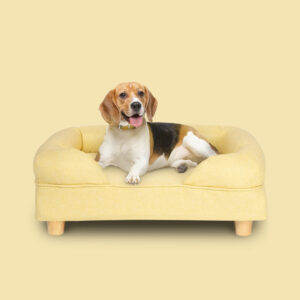
Mostly As: It is clear that your dog is as relaxed and easy going as dogs come; they are happy to go along with most things as long as they have a comfy bed to come back to for a snooze. A Mellow Yellow bed will be perfect for him or her to rest their head on after walks and play.
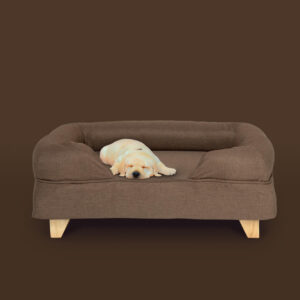
Mostly Bs: Your dog is a fiesty one, full of energy and play. We think that a Mocha Brown bed will be perfect for him or her. The soft and subtle brown colour will look great in any room of your house, and against whatever colour your dog’s coat is. As a bonus, the inevitable muddy paw prints front our dog’s adventures will be camouflaged on the bed!
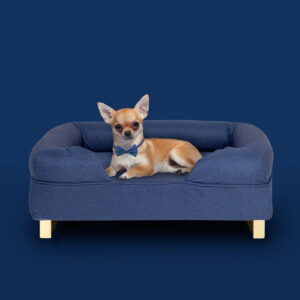
Mostly Cs: Midnight Blue is no doubt the colour for your dog. A stylish and sensitive soul, he or she will love relaxing against the calming blue after a busy day out on the town, and you will appreciate the way the dog bed adds a bit of colour to your home while still blending in nicely with the rest of your furnishings.

Mostly Ds: It’s clear that your dog will love a Lavender Lilac dog bed. They are a social creature who want nothing more than to spend time with their favourite humans, it doesn’t matter if it’s on a walk or lying in the corner of the kitchen while you’re having dinner. The relaxing dark purple colour will be great for when they are tired and need to wind down.
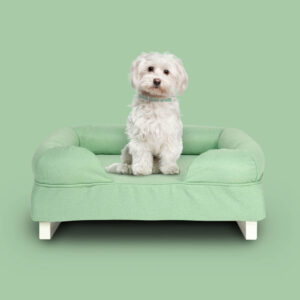
Mostly Es: Your dog is adventurous and has lots of energy, he or she probably never slows down, and is always happy to chase a ball in the garden or go for a run across the fields. You’re probably very similar, so we think a Matcha Green bed will be perfect for those rare times when they actually retreat to their bed to rest those legs.
This entry was posted in Dogs

If you share your home with a dog, it’s important to make sure the space is just as comfortable, hygienic and safe for them as it is for you. With these 5 dog-friendly interior tips for your home, you can be assured they’re staying safe, whilst your home stays in tip-top condition.
1. Materials matter
This is a simple idea but one that will save you a lot of cleaning time and expense in the long run. Opt for washable sofa covers wherever possible and steer clear of materials that can easily be scratched or will likely attract loose fur. Removing pet hair from your home can be done but it can also be a hassle, especially when it’s partially preventable. Some dogs will need grooming more than others, but brushing your dog regularly will help keep fur off furniture as well.
The same goes for flooring – choose something easy to mop or wipe, especially after a muddy dog walk. A machine-washable dog mattress like our Bolster dog bed will also help to minimize dirt and fur in your home. Simply unzip the cover and machine wash to maintain home hygiene and fresh sheets for Fido.
2. Styling your dog’s bed to your home
Your dog’s bed no longer has to stand out awkwardly in your home. Omlet’s Bolster dog beds are available in 15 bold colours, with a selection of limited edition prints from the Dog Walk and Gardenia collections to suit your interior style. Matching the colour of the dog bed to an accent colour in any room can be a great way to integrate their bed with your interior style, and really make it part of the home.
Plus, you can even raise your dog’s bed from the ground for an impressive touch with our range of designer dog bed feet. With the choice of 9 different styles of feet, there’s a dog mattress and feet combination for every home and dog. Curious for more interior styling tips? Find out whether your dog’s bed matches your decor.
3. Dog crate or stylish furniture?
A stylish dog bed needs a stylish dog crate to match. Dog crates are recommended by dog trainers and veterinarians for their many benefits. Not only do they offer a relaxing space for your dog to call their own, but they can also provide comfort and security, especially for puppies and anxious dogs when feeling overwhelmed.
Standard dog crates can be an eyesore in a beautifully decorated home, but we worked to curate a product that doubled as a doggy den and piece of furniture. Introducing the modern Fido Studio dog crate…Available in a Walnut or White design, you can even also an optional wardrobe with a handy storage unit for your dog’s toys and treats (or maybe clothes!). To finish the look, you can seamlessly slide in your Bolster dog bed to create the ultimate hideaway for your four-legged friend and a chic corner in your home.
4. Remove temptation
Most owners of excitable dog breeds will be well-practised in drink-saving reactions to prevent a whipping tail from causing carnage. It’s important to keep breakable or potentially harmful items like candles and glasses up high, not just for your sake but also for your dog’s safety. It’s wise to opt for higher side tables rather than lower-sitting coffee tables for tea and snacks to move the temptation of tasty human treats out of sight.
Dogs that are physically and mentally stimulated are less likely to be destructive in the home as well. Ensure that regardless of your dog’s breed, they’re provided with enriching activities in addition to their daily walks. You can exercise your dog indoors by playing games such as hide and seek, teaching your pup new tricks or even creating an obstacle course using materials you can find around the house.
5. Plants and pets
You can still enjoy house plants and a beautiful backyard when you have a dog but it goes without saying that you should first check they’re not toxic. This isn’t an exhaustive list but the following plants can be dangerous to dogs:
- Aloe vera
- Onion and garlic plants
- Ivy
- Bluebells
- Daffodils
- Grapevine fruits
- Mistletoe
- Holly
There are plenty of plant species that are also dog-friendly, though. These include but are not limited to:
- Magnolia bushes
- Rosemary
- Fennel
- Pansies
- Wheatgrass
- Sunflowers
- Lavender
It’s also worth noting that if your dog loves mud, you might also prefer to keep houseplants up out of reach of digging paws!
Omlet and your dog’s home
With Omlet’s range of dog products such as our easy-to-clean dog beds, stylish dog crates and dog toys, you can continue to build a wondrous connection between you and Fido, all while your and your dog’s home remains a safe haven and looks great too.
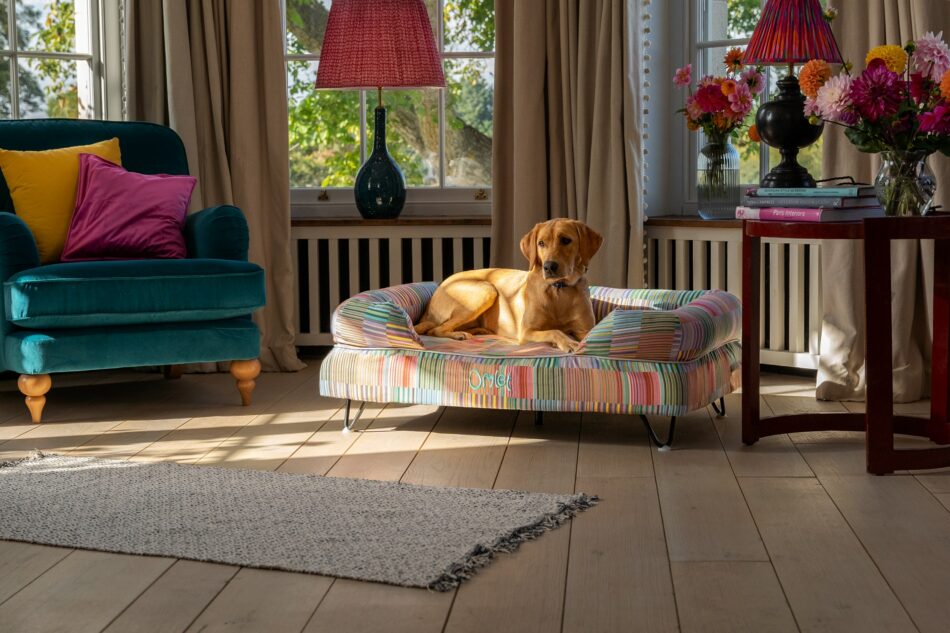
This entry was posted in Dogs
Exercising doesn’t always come easily — in fact, lack of motivation is one of the most common reasons people don’t participate in physical activity. But having a partner to work out with can make all the difference, especially when that partner brings a positive attitude and a wagging tail to the table. Here’s why dogs make great workout buddies, and how you can start exercising with your pup to give you both a healthier leash on life.
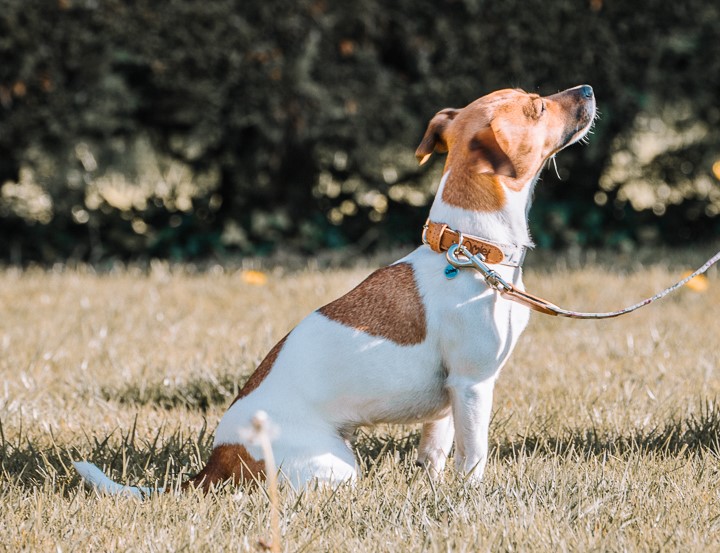
5 Reasons why dogs make great workout buddies
There are several reasons to exercise, and they’re as true for you as they are for your dog. Better physical health, maintaining a healthy weight, and increased mental well-being are just a few benefits that physical activity offers for humans and canines alike. Here’s how you and your dog can keep each other accountable and motivated throughout your healthy lifestyle journey.
1. Dogs are energetic
When’s the last time you saw a human jump for joy at the sight of their running shoes? In contrast, a dog’s reaction to seeing their leash is usually a mixture of unbridled excitement and elation. Depending on the dog, this energy can last anywhere from several minutes to the duration of your workout together, lending you the support and motivation you need to get going.
2. Pups set the pace
Dogs are very good at setting a steady pace. Once they find their stride, you can count on your pup to help set the pace for your workout. Match your cadence to canine’s, and find a familiar rhythm in the wag of their tail or the pattern of their panting. This natural soundtrack to your workout is soothing and motivating, and gives you a focal point if you start to lose steam.
3. Safety in numbers
Running or walking alone isn’t just dull, it can be dangerous. Depending on when and where you do your workouts, there can be concerns of various types. The presence of your pup can provide peace of mind, as their ears and noses are much more sensitive than a human’s. Your dog will be able to sense trouble before you do, and will help deter unwanted encounters.
4. Their schedule’s always open
No more waiting for schedules to align with your human workout buddy — your dog is always available. Since your dog is part of your household, your schedules are already in sync with each other, making exercising together even easier. Dogs are also habit-forming animals, so by setting a schedule to workout with them, they’ll come to expect it. Keep their leash in its designated spot, and try to workout at the same time each day. You’ll soon find your pup gravitating toward their leash as your regular exercise time nears to help keep you accountable.
5. Good vibes only
You’ll never hear a complaint or criticism from your canine, only quiet companionship and confidence. The positivity from your pup is often one of the greatest motivators you can find. No more listening to a personal trainer yell instructions to you — let your dog do the barking.
Dog breeds that make the best workout buddies
Exercise benefits all breeds of dogs, but depending on your level of intensity, you may need to modify your workout to your dog’s ability. For example, dogs with short legs like Dachshunds or Corgis won’t be able to run an entire 5k with you, but they can work up to walking one. Similarly, dogs with “smooshed” faces like Pugs, Bulldogs, or Boston Terriers have restricted airways and shouldn’t be pushed to the point of exertion. Puppies and senior dogs also may not be able to keep the pace with you over long distances.
If you’re looking to adopt a dog and want to incorporate them into your active lifestyle, consider these breeds:
High energy, athletic dog breeds
- Australian Shepherds
- Border Collies
- Boxers*
- Dalmatians
- Doberman Pinschers
- English Springer Spaniels
- German Shepherds
- German Shorthair Pointers
- Greyhounds
- Jack Russell Terriers
- Labrador Retrievers
- Siberian Huskies
- Vizslas
- Weimaraners
*Boxers are a brachycephalic breed, which means they are “snub nosed” and more prone to respiratory distress.
Other breeds may be up to the task of exercising with you, including mixed or smaller breeds. The most important thing is that your pup has received a clean bill of health from your veterinarian, and that you modify workouts as needed to adjust to their ability.
Exercises to do with your dog
So, you’ve decided to be disciplined with your dog and commit to working out — but what disciplines can dogs join you in? The most common exercises that owners take their dogs along for include running and walking, but there are some other activities you can include your dog in. Consider these dog-friendly workout ideas:
- Hiking
- Swimming*
- Kayaking, rowing, or canoeing*
- Yoga
- Cycling
- Dance
*Make sure your dog is fitted with an approved life jacket during these activities.
If you’re heading outside for a workout, choose a time of day where the temperature is moderate. Never exercise outside with your dog in the middle of the day during the hotter months — this can cause heat exhaustion or even heat stroke in dogs, especially breeds with heavy coats. So what temperature is too hot for your dog? When the real-feel temperature reaches 85°F or higher, it’s best to stick to indoor activities. And be sure to check the pavement with the back of your hand before you set out with your dog — if it’s too hot for your hand, it’s too hot for their paws.
Take plenty of water and offer your dog small sips every 15-20 minutes during activity. Plan their mealtimes at least 2 hours before exercising, and wait at least an hour after a workout to feed them to prevent digestive upset. Be sure to take cleanup bags with you — what goes in, must come out, and exercise often stimulates the intestines.
Omlet and your dogs
There’s nothing quite as sweet as that post-workout nap. Give your pup a comfy dog bed to sink into, or a supportive dog crate to retreat to after their cool down. Offer them nourishment and hydration in stylish dog bowls to help them feel their best, so they’re always ready for adventure. With Omlet, you and your dog can enjoy a lifetime of companionship together — both at home and on the go.


This entry was posted in Dogs
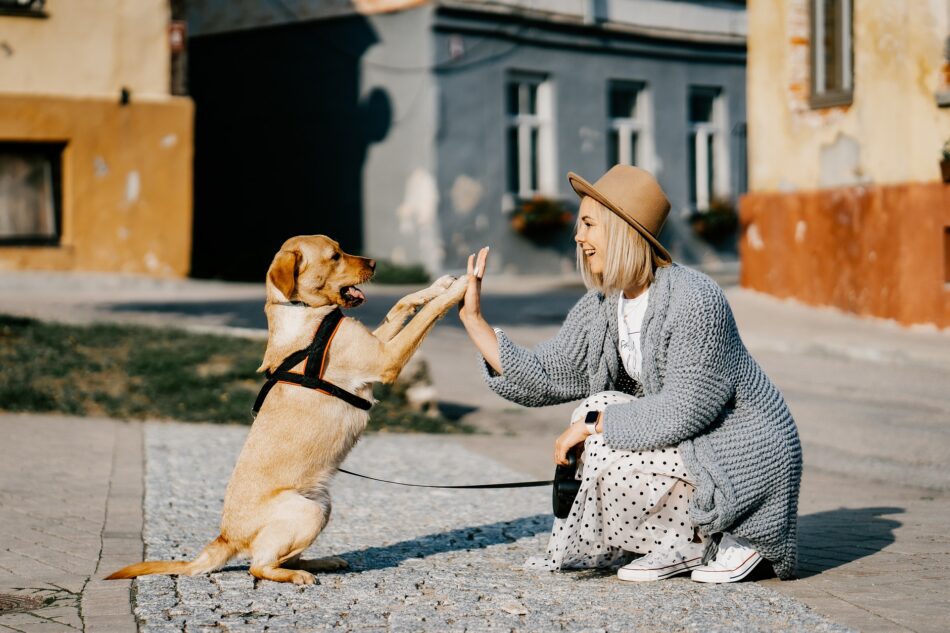 A dog who has been taught positive behaviour will be your best friend – fun, affectionate and reliable. It’s straightforward teaching your dog this canine version of positive thinking, but it won’t happen unless you lead the way.
A dog who has been taught positive behaviour will be your best friend – fun, affectionate and reliable. It’s straightforward teaching your dog this canine version of positive thinking, but it won’t happen unless you lead the way.
There are many ways of teaching a dog the rights and wrongs of living in the human world, and that extends to how they interact with other dogs and the world around them. In this article, we reveal the five rules of thumb for all dog owners – whether you’re training an adult dog or a puppy.
Encouraging Positive Behaviour in Puppies
Puppies recognise when we’re pleased or displeased. It’s all part of their instincts, and in the wild this instinct helped their wolf ancestors find their place in the pack very quickly. Learning their place in the big wide world is all about positive reinforcement.
1. Puppy Treats. Dogs of all ages love food and will put lots of effort into doing what you want them to do as long a there’s a yummy treat at the end of it! This means treat-based training can be used for everything from toilet training to basic obedience training and that all-important early socialisation. The message here is simple and timeless – do this right, and you’ll get a treat!
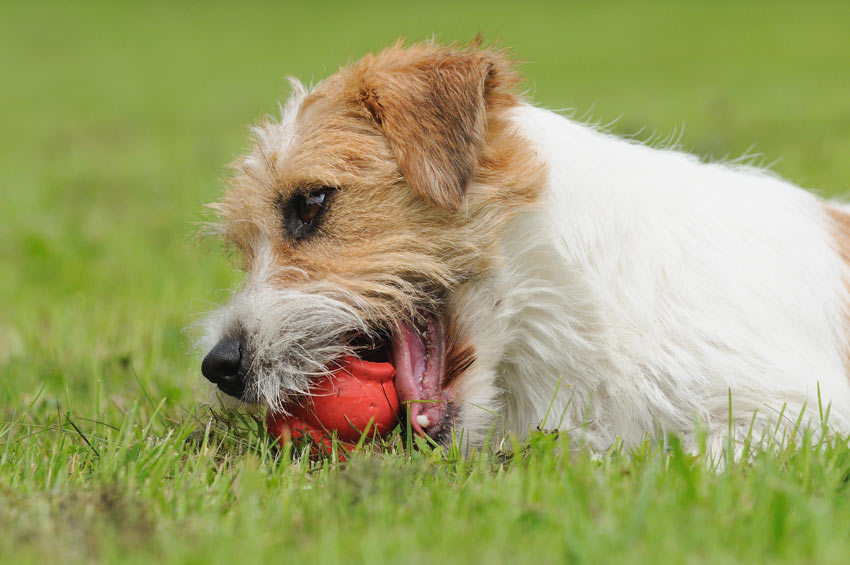 2. Affection. This is arguably even better than a food treat! Bonding with a puppy involves physical contact in the form of belly-rubs, back stroking and lots of gentle words of affection and encouragement.
2. Affection. This is arguably even better than a food treat! Bonding with a puppy involves physical contact in the form of belly-rubs, back stroking and lots of gentle words of affection and encouragement.
3. Fun and games. Tug-of-war, fetch and simply running around the garden with you are games that puppies love. What’s more, they strengthen the bond and love between you and your pet, and that’s the perfect groundwork for training and encouraging positive behaviour.
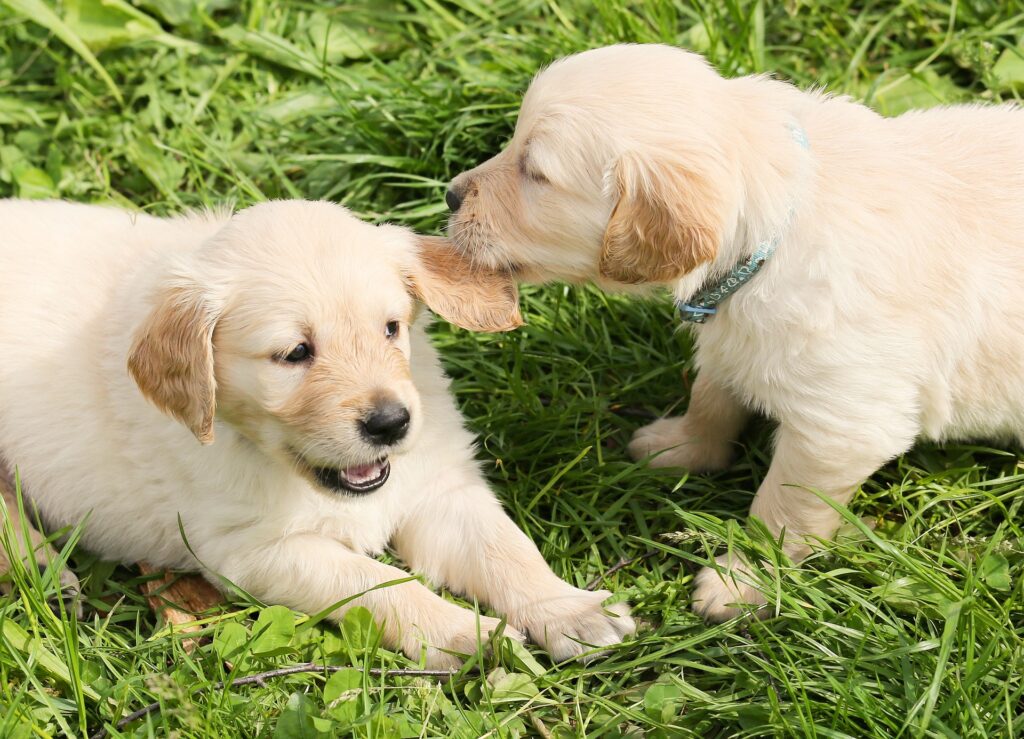 4. A trip to a favourite place. This is a great treat for dogs, and can be as simple as a trip to the park, or perhaps to a favourite street for an on-lead walk, or maybe a shop that sells some of those yummy treats! If this is being done as a reward for good behaviour, make sure your puppy knows it by telling them what a good boy/girl they are as you put the lead on or get into the car!
4. A trip to a favourite place. This is a great treat for dogs, and can be as simple as a trip to the park, or perhaps to a favourite street for an on-lead walk, or maybe a shop that sells some of those yummy treats! If this is being done as a reward for good behaviour, make sure your puppy knows it by telling them what a good boy/girl they are as you put the lead on or get into the car!
5. Puppy playdates. Starting these early is a great way to socialise your puppy, and that provides the basis for all the positive behaviour training. Young dogs love meeting each other – it’s not going to be a quiet morning out with your furry friend, but it’s one that will give him or her essential social skills.
Encouraging Positive Behaviour in Adult Dogs
The basics are simple. Positive reinforcement rewards a dog for good behaviour and ignores, rather than punishes, undesirable behaviour. Punishment will only lead to confusion and fear in your dog, reducing your chances of achieving the full benefits of positive-behaviour training.
Here are the five ways to make everything go smoothly, no matter which dog breed you have.
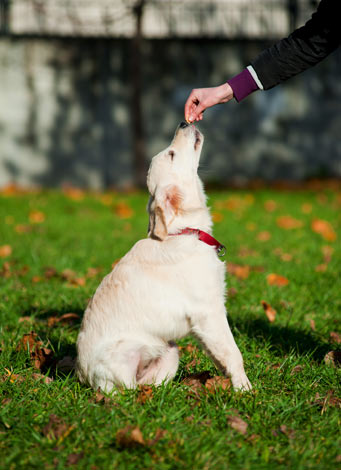 1. Keep it simple. One-word commands are better than complex ones. We’re talking here about sit, come, sat, etc. Save the long-winded exchanges for praise and affection! A training session based on simple commands and treats is a great start for encouraging positive behaviour. Which brings us to…
1. Keep it simple. One-word commands are better than complex ones. We’re talking here about sit, come, sat, etc. Save the long-winded exchanges for praise and affection! A training session based on simple commands and treats is a great start for encouraging positive behaviour. Which brings us to…
2. Treats. Just like puppies, adult dogs will be well and truly ‘reinforced’ if treats are involved. Some breeds are more food-obsessed than others, but all types of dog will quickly learn that good behaviour results – at least in the early days of training – in a yummy treat.
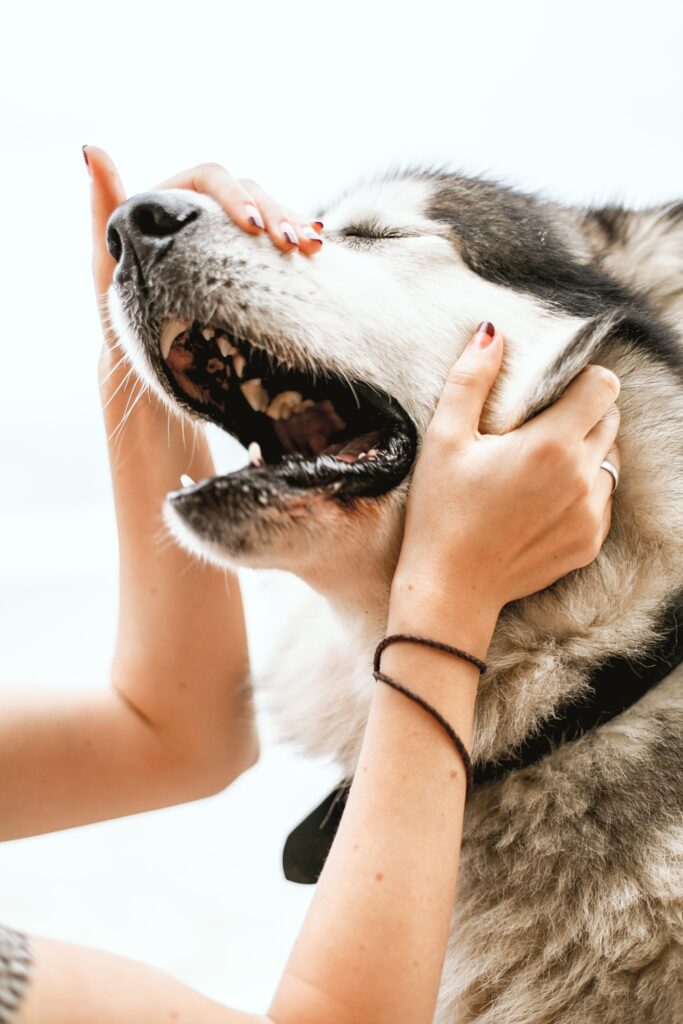 3. Quality time. Dogs are social animals by instinct, and they will thrive in human company. Once you and your pet are the best of friends, the positive behaviour training will be much easier. If there’s any nervousness or standoffishness in your dog, they will be less able to take on board the things you’re trying to teach them. So, keep up the contact, and play with them every day.
3. Quality time. Dogs are social animals by instinct, and they will thrive in human company. Once you and your pet are the best of friends, the positive behaviour training will be much easier. If there’s any nervousness or standoffishness in your dog, they will be less able to take on board the things you’re trying to teach them. So, keep up the contact, and play with them every day.
4. Make it fun. A long session of ‘sit, lie down, stay, come’, etc. will soon become boring for a dog. A short session of command-based training followed by a bit of fun, however, will make your dog look forward to the sessions every time. After five or ten minutes (depending on your dog’s stamina), round off the proceedings with a game or a walk. The dog will soon realise that “If I do this tricky bit, I get that fun bit afterwards!” It’s a trick that works just as well with young children – “Finish your homework, and then we’ll go out on the bikes!”, that kind of thing.
5. Get everyone involved. Once your dog has grasped some of the basics, other members of the family, or friends, can reinforce the good behaviour by running through some of the training with your dog. Your pet will then learn that positive behaviour is part of their general lives and applies in all situations with all people.
This latter point is the ‘quantum leap’ for a dog – the idea that positive behaviour extends beyond their immediate owner to the big wide world around them. Getting them to this point takes time, there’s no doubt about that, and some breeds are a lot easier to train than others. However, once the work has paid off, you’ll have a doggy best friend you can be truly proud of!
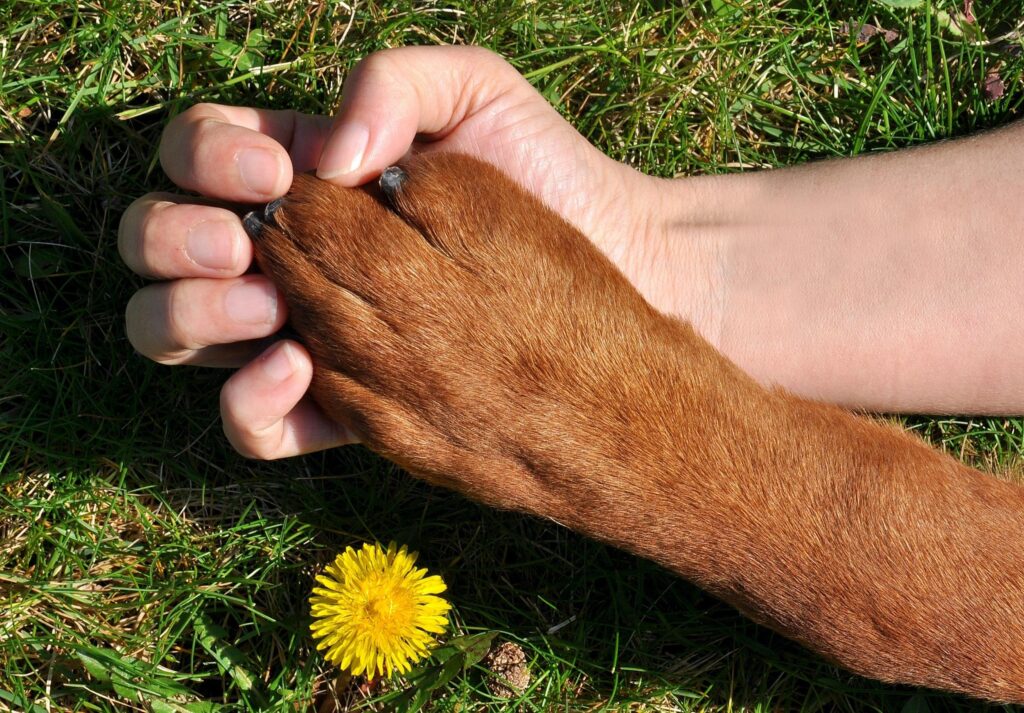
This entry was posted in Dogs
Pride of Omlet series is a collection of amazing stories which shine the spotlight on extraordinary pets and share their selflessness, bravery, talent and compassion with the world.

We have been lucky enough to collect some wonderful stories of your extraordinary pets and share them with you for 10 weeks! Here is a summary of the stories that you can read again and find directly on our Blog.
Pride of Omlet: Stand Up for Disabled Animals

Jerry’s a cheeky, playful and boisterous rescue dog from Romania who can do a handstand! He landed on his feet when Shena gave him a home and inspired her to start a rescue centre specialising in disabled animals. Read the story here!
Pride of Omlet: The Constant Companion
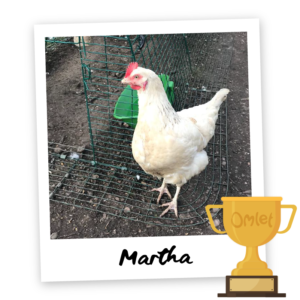
Martha’s humans Nicola and Ben bought chickens to bring joy to Julia, their mother who they cared for at home. The family could never have imagined that a chicken would become a caring companion to Julia in the advanced stages of dementia. Read the story here!
Pride of Omlet: Free Support
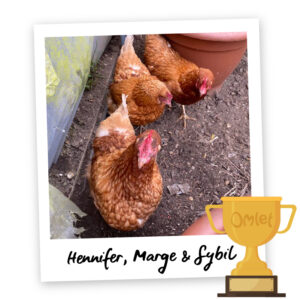
Once caged battery hens, Hennifer Marge and Sybil now work free-range with their human Jonathan, transforming lives for offenders at the Rosemead Project. Jonathan (support worker and chicken champion) believes the hens have the power to unscramble tricky social situations. Read the story here!
Pride of Omlet: A Perfect Match
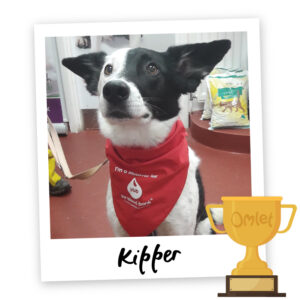
On paper, Kipper wasn’t exactly what Angela wanted. After years of behavioural challenges, he’s become the best-behaved blood donor and saved over forty dog’s lives. Kipper’s turned out to be Angela’s perfect match. Read the story here!
Pride of Omlet: Teachers Pet

Henni Hen is a teaching assistant by trade. A cute and cuddly chicken who loves children. She follows in the footsteps of her bubbly humans, Hamish and Verity. Read the story here!
Pride of Omlet: Mipit Makes Sense

Mipit is a Mental Health Assistance Dog for his human, Henley. Mipit keeps Henly alive and independent. Who wouldn’t love a dog that can put out your recycling, answer your phone, and be your best friend, come rain or shine? Read the story here!
Pride of Omlet: Perfect Peaky
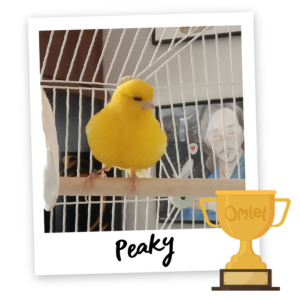
At the tender age of one, Peaky is already a retired filmstar. He had lived in a cage his whole life, released only to perform. When Joana and Fergus took him home, he was a fluffy, yellow bundle of nerves. But they are determined to help Peaky, their cute little canary companion, to come out of his shell. Read the story here!
Pride of Omlet: Saving Sophia’s Life

When you’ve grown up with animals, home isn’t home without a pet. Bringing Harry home was lifesaving for both him and his humans, Sarah and daughter Sophia. Harry has a special gift. He’s a unique epilepsy monitor, and he’s saved Sophia’s life countless times. Read the story here!
Pride of Omlet: Buster’s Beard

Buster was destined to chase balls on the beaches of Barry Island. He’s a lovable labradoodle with big brown eyes and a long beard. A thinker with a playful nature, he’s co-authored a children’s book with his human Natalie to bring Autism Awareness to all. Read the story here!
Pride of Omlet: Brave Bunnies

It’s hard to describe how frightened Pixie the rabbit was when the RSPCA rehomed her with an experienced rabbit owner. Eighteen months on, cheeky little Pixie lives in the lap of luxury and is learning to be loved by her adoring human, Wendy. Read the story here!
This entry was posted in Budgies
David is a long time lover of dogs since he was young. He loves most dogs but his favorite are golden retrievers. He also runs his own blog at dogdesires.co.uk where he helps other dog owners with advice and dog product reviews. In this article David gives 5 considerations for finding the right dog breed for you.
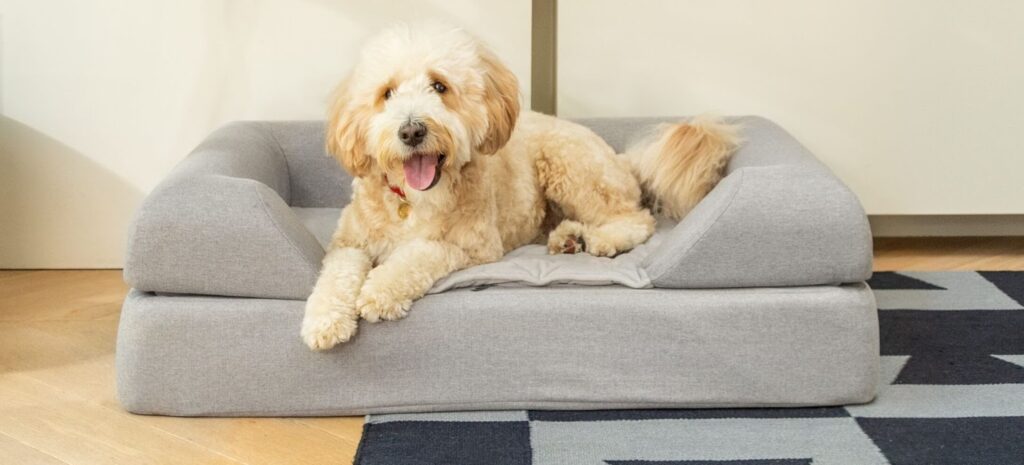
There are several things you need to consider in order to choose the right dog breed for you. Depending on your lifestyle, certain breeds are more suited for you because of their size, maintenance, activity level, and more.
Read on for more detail and by the end of this article, you will have the insight needed in order to choose the ideal dog breed for you.
Size
Some people already have their hearts set on whether they would like a huge dog or a tiny one. Those who aren’t sure or that bothered about it tend to go for medium-sized dogs.
One thing that is an important deciding factor regarding what size breed is best for you is your living conditions. Naturally, large dogs need a lot of space so if you’re living in a relatively small and cozy apartment you would not want to get a Great Dane. They especially need more room because of their tails, so that they can wag without injuring anyone or damaging anything.
That being said, living in an apartment does not automatically mean you must get a toy dog. Some dog breeds are known for being adaptable to living in apartments, such as the Sheepadoodle. If you’d like to read more about this breed, you should check out this breed guide here – Sheepadoodle.
Keep in mind that small dogs are more vulnerable, in the sense that you need to get used to always looking down to not step on them. Smaller dogs also tend to be more sensitive to the cold so they need a little help staying warm.
Maintenance
With maintenance comes many things. Firstly, some breeds have fur that needs a lot of maintenance to stay healthy. Dogs with short fur are easy to take care of, such as Springadors, as they just need brushing every now and then. But dogs with longer fur, curly or otherwise, need to be brushed more frequently as well as trimmed and more. So, you will need to dedicate more time to these dogs.
Another factor is the expense. The larger the dog, the more food you need to buy and larger dog beds, etc.
Lastly, there’s training. This is very important, as some dog breeds are known for being more well-behaved and thus easier to train. Smaller dogs tend to have something that is referred to as ‘small dog syndrome’, which is when a small dog thinks that they are bigger than they actually are and therefore have more of an attitude. This can cause them to be more stubborn when it comes to training. For example, pugs are known for being naughty and for being stubborn.
Another good thing to remember is that if you let a large dog breed behave as a lap dog from a young age, they will continue to try and walk all over you when they become adults – and I mean that literally, not figuratively.
Also, dogs with long and floppy ears need frequent and thorough cleaning as they are more prone to ear infections. Moreover, certain dogs are more likely to drool than others such as Bloodhounds and Mastiffs.
Activity Level
If you get a hunting dog breed, such as a Labrador, Beagle, Foxhound, etc., then you can expect this dog to have a high activity level. Even crossbreeds with a hunting dog parent tend to inherit the genes and have a lot of energy.
Most dogs do not destroy things and dig up holes in your yard without a reason; energetic dogs, in particular, need much more exercise and become bored and destructive without it. Mental exercise, as well as physical, is a must too.
No matter the breed or size though, all dogs need routine exercise. You will need to commit to going for walks twice a day and if you’re looking for a dog that you can jog with then a Weimaraner or German Shepherd are great choices.
Personality
This one goes without saying for some people, but seeing as certain breeds are known for having certain personalities, we can use this to our advantage. For those of you who are looking for a cuddly and loving dog, Retrievers, Greyhounds, Irish Wolfhounds, Old English Sheepdogs, Pitbull Terrier, and King Charles Spaniels are known to be some of the most affectionate dog breeds.
Restrictions
Unfortunately, depending on the country and state you’re in, some breeds may be banned.
To give an example I would like to name Pit Bulls and Rottweilers. Both of these dog breeds are sadly banned in many states, the reason being that they face stigmas as ‘dangerous’ and ‘aggressive’.
Pit Bulls and Rottweilers are banned in the following states respectively:
Alabama, Alaska, Arkansas, California, Colorado, Delaware, Florida, Georgia, Idaho, Illinois, Indiana, Iowa, Kansas, Kentucky, Louisiana, Maryland, Massachusetts, Michigan, Mississippi, Missouri, Montana, Nebraska, New Jersey, New Mexico, New York, North Carolina, North Dakota, Ohio, Oregon, Pennsylvania, Rhode Island, South Carolina, South Dakota, Tennessee, Texas, Utah, Washington, West Virginia, Wisconsin, and Wyoming.
Personally, I would like to note that I have had several dogs of both of these breeds and none of them ever showed any signs of being aggressive or dangerous in any way. They were sweet, kind, and several of the Rottweilers were protective over me.
I do not believe for a second that aggression can be inherited in genes, but rather it comes about when a dog is being raised wrongly.
This entry was posted in Dogs
 20.05. – National Rescue Dog Day! We would like to use this special date to address animal welfare, shelters, the hard work they have to face every day and of course everything about the topic of adoption.
20.05. – National Rescue Dog Day! We would like to use this special date to address animal welfare, shelters, the hard work they have to face every day and of course everything about the topic of adoption.
Every year, approximately 3.3 million dogs enter animal shelters nationwide in the US and are in dire need of being adopted. With this warning number, it’s important we consider our local pet shelters when welcoming a new family member. We’ve interviewed an animal shelter which has a tough job to do. Let’s find out more about this work and the process!
The “Einfach Tierschutz e.V.” is a German non-profit animal welfare association founded in 2016 with the aim of helping street dogs where the need is greatest. This is particularly the case in Eastern and Southern European countries, where especially street dogs have no rights and face harsh times. Einfach Tierschutz stands up for those animals in need, in areas such as Romania.
“Everyone has a purpose in its life, a reason for being in the world. My purpose is to save dogs.”
Jens Waldinger, Head of Einfach Tierschutz
1. Omlet: Can you please tell us a bit about the company: how many pets do you care for? What does the work at an animal shelter involve and what does a typical day at your shelter look like?
 Einfach Tierschutz: Einfach Tierschutz e.V. is the owner and operator of two animal shelters in Braila, Romania. In our “Phoenix Shelter”, where we take care of about 400 street dogs, just recently also cats, and try to find them a new home. They get medically treated and socialised every day in an area of 10,000 m².
Einfach Tierschutz: Einfach Tierschutz e.V. is the owner and operator of two animal shelters in Braila, Romania. In our “Phoenix Shelter”, where we take care of about 400 street dogs, just recently also cats, and try to find them a new home. They get medically treated and socialised every day in an area of 10,000 m².
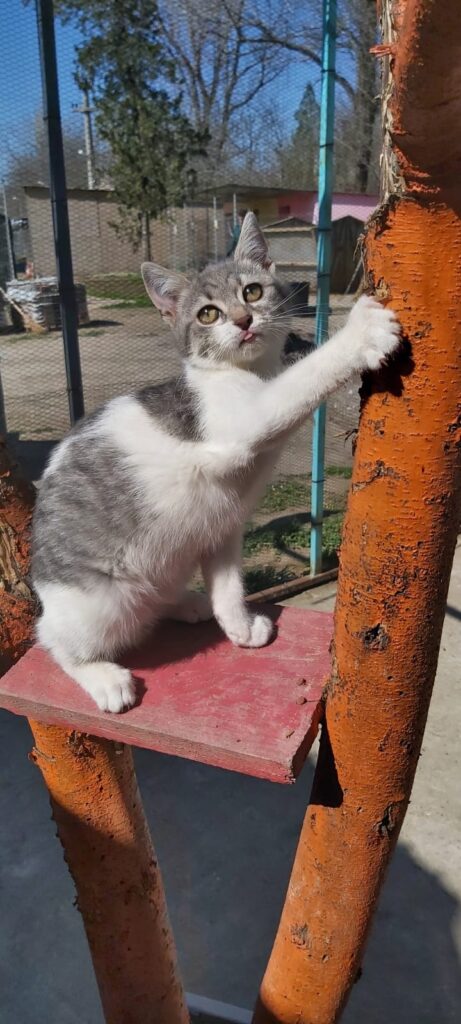 Since spring 2020, we have been running our second shelter especially for puppies, the “Phoenix Puppy Shelter”, where up to 50 puppies and young dogs are fostered, cared for and prepared for placement in a family on an area of 2,000 m². In addition, we were able to realise a long-cherished wish in 2020 with the construction of the cat house on our premises and thus also provide our cats with safe and species-appropriate accommodation.
Since spring 2020, we have been running our second shelter especially for puppies, the “Phoenix Puppy Shelter”, where up to 50 puppies and young dogs are fostered, cared for and prepared for placement in a family on an area of 2,000 m². In addition, we were able to realise a long-cherished wish in 2020 with the construction of the cat house on our premises and thus also provide our cats with safe and species-appropriate accommodation.
We have employed an average of 6 staff members in the shelters of Romania, who work in shifts so that someone is present at all times. Additionally, we have a driver and an office worker as well as the shelter manager on site. The tasks of the staff are mainly the support and maintenance of the dogs as well as night watch and administrative activities.
Our team consists of trained and certified dog trainers, professionals and experienced foster homes, and we are in contact with vets/veterinary assistants. We also work closely with the veterinary office, registering both our transports and our foster homes there, and can provide proof of the correct written documentation on transports, dogs and adopters at any time.
Our office is located in Germany, from where we coordinate all of the association’s activities. Various volunteer teams work under our guidance in the areas of social media, pre- and post-inspections, placements, adoptions, flea market and planning of the shelter travels.
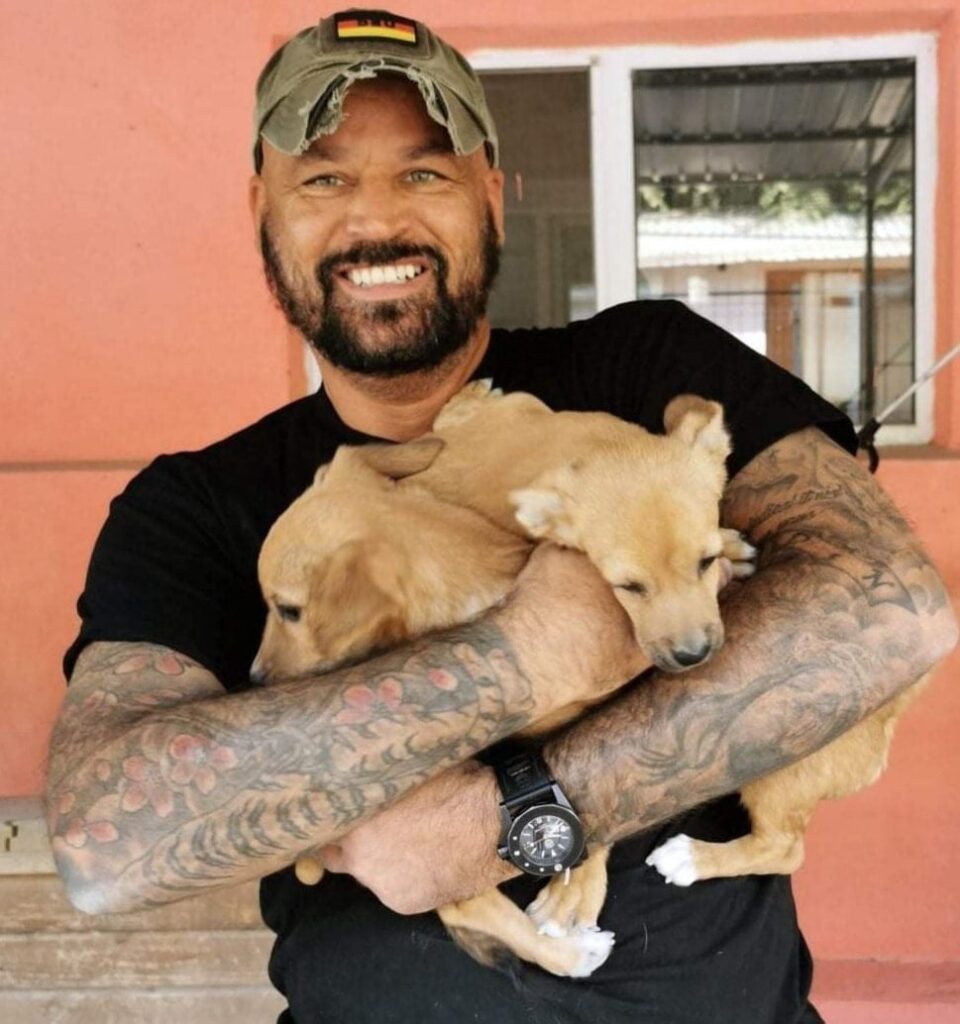
Jens Waldinger – Head and Manager of the shelter
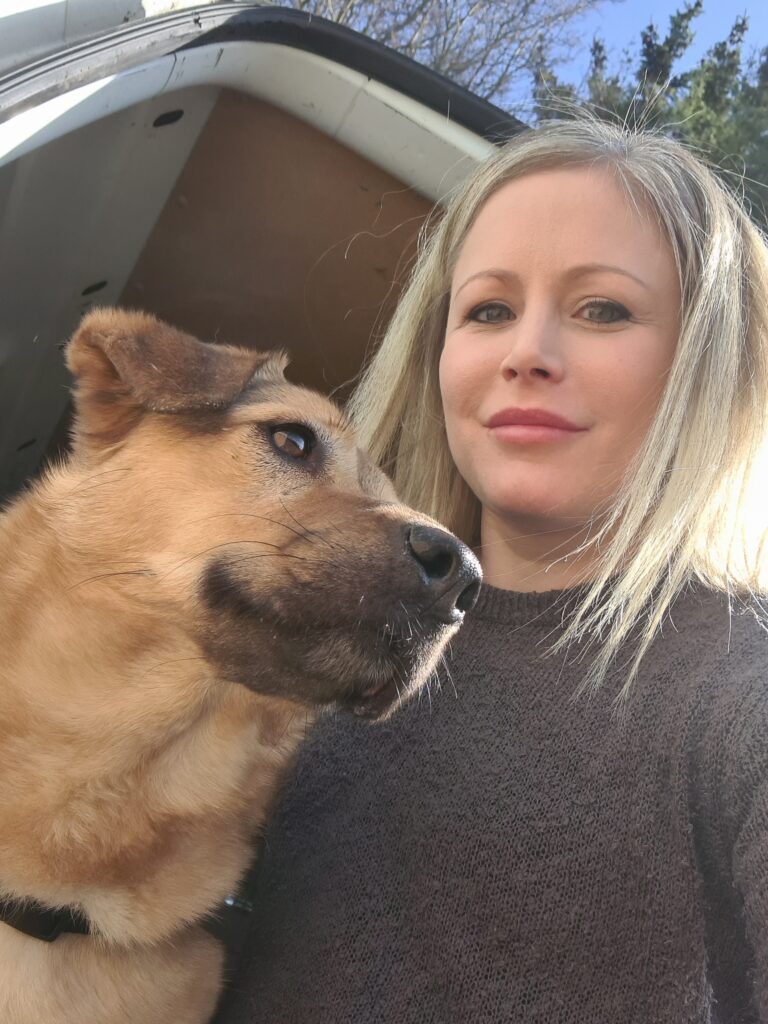
Sarah Goetschel – Head and Manager in DE with foster dog Puschi (Heart)

Carmen Salcedo – Dog Management in Braila, Romania
A primary goal of our work is to rehome as many dogs as possible and place them into loving and safe homes. We also provide a licensed transporter in order to transport our dogs and cats in our own equipped vehicles from Romania to their future families in Germany, Austria or Switzerland.
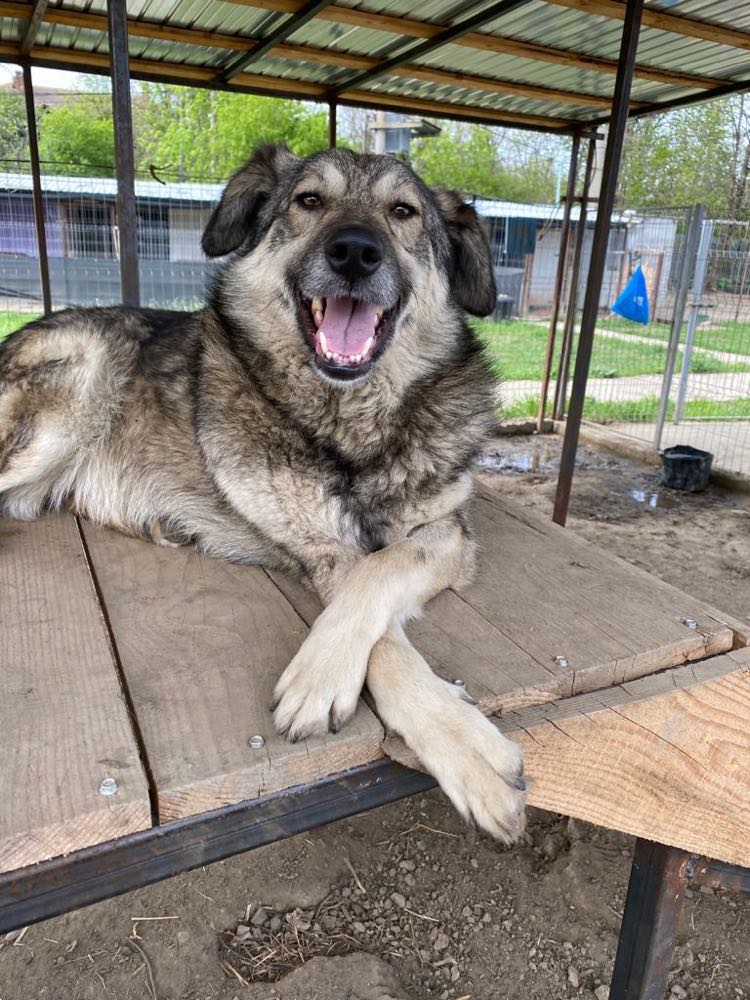
Lutz (top model, top dog)
We provide dogs, which are not suitable for a life as a family dog or for any other owner, a permanent safe refuge in our shelter. Here, they will have a better life without hunger and diseases, and are not exposed to the bad and cold weather conditions in Romania, especially during the winter season – just a stable and stress-free life with their conspecifics.
Another goal for us is to make an important contribution by helping to control the reproduction of street dogs and cats through regular castration campaigns at our expense, and to bring about a change in the way the local population thinks about handling this issue. Due to the uncontrolled multiplication of street as well as house and yard dogs of the inhabitants, thousands of unwanted puppies end up on the streets or in the municipal animal shelters every year, which are allowed to euthanise these dogs after a period of two weeks if they are overcrowded. We also intervene here and are happy if we can take some of these dogs with us.
 Castration Marathon in Baraila, Romania
Castration Marathon in Baraila, Romania
2. Omlet: What differs Einfach Tierschutz from other animal rescue organisations?
Einfach Tierschutz: First of all, the Einfach Tierschutz is a German association which is not only active abroad, but also runs its own animal shelter abroad. We do not solely rehome our dogs in Germany, but also in Switzerland and Austria. But mostly, we stand out because of our size: since we have started this organisation, we now have over 8,000 members who support us. We have succeeded in convincing many people of our projects and know-how in just a few years, and with their support through donations, memberships, sponsorships, etc. we have been able to invest wisely.
We also offer our members the experience of travelling to our Phoenix Shelter in Romania to actively support us there and to see for themselves, what our team’s workload is and what we have achieved in this short period of time so far with all the donations and membership fees we receive from them.


“There is a before and an after in my life: Before the trip to the Phoenix Shelter and after the trip, because since then I know what it is worth living and fighting for every day: “my” dogs there in the shelter. I may be back in Germany, but my heart has stayed there with the dogs.”
– Association member a few weeks after returning from a shelter trip
We offer our members the opportunity to follow our work on a daily basis via our Facebook members’ group, provide pictures and video material from our shelter and thus allow every member to participate in current events. We also offer the opportunity to network with other members at more than 40 regulars’ tables and to plan joint activities such as information booths or fundraising campaigns.
 We recently had our first big tombola where our members purchased lots from us in order to have the chance to win many great prizes from generous donors. The proceeds went directly to the shelter.
We recently had our first big tombola where our members purchased lots from us in order to have the chance to win many great prizes from generous donors. The proceeds went directly to the shelter.
We are constantly working to improve our standards and ourselves professionally, in line with our ideas of good, sustainable animal welfare so that we can continue to grow and help as many animals as possible. In this way, we are always trying to maintain a balance between possible improvements and new projects or extension of our activities. We are very motivated and hungry to go further, to achieve even more.
3. Omlet: What do you like about your work? What is most rewarding?
Interviewee: Every little success reminds us why we do all this. Whether it is rescued dogs that we are able to bring into the safety of our shelter, whether it is animals that are brought back to life after serious illness or injury, whether it is once fearful and shy dogs that we have been able to socialise to such an extent that they can now enjoy their lives in a family and happily romp across green meadows… all these individual fates that are given a chance for a better life through our work is what makes the work worthwhile for us!
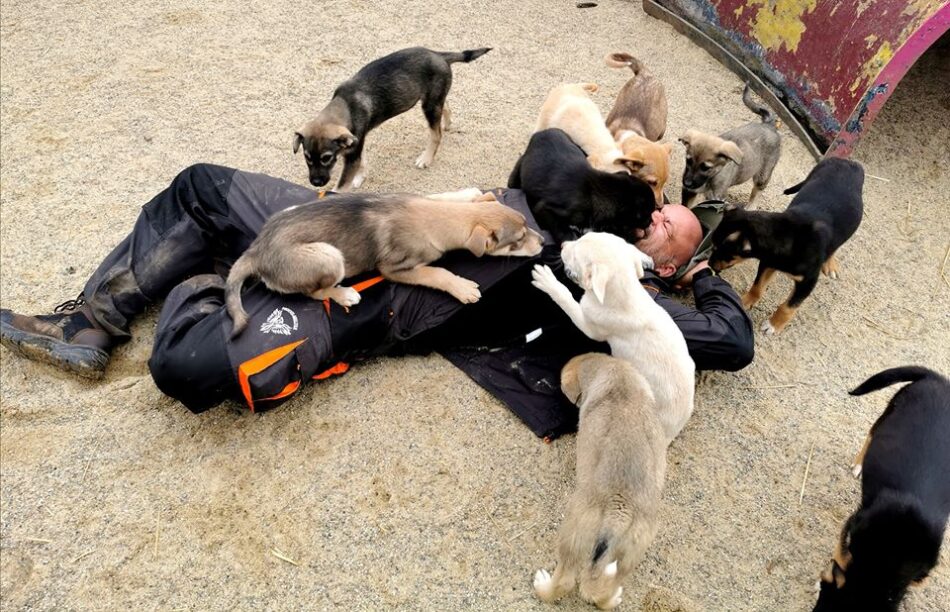
4. Omlet: Adoption vs. Purchase – what is the biggest challenge?
Einfach Tierschutz: From our point of view, the biggest problems are the mass breeding of pedigree dogs, while thousands of dogs are waiting for a loving home in the animal shelters. In particular, the illegal breeding and illegal transfer of puppies from abroad, which are then sold cheaply via various online portals by professional traffickers posing as private individuals, is a thorn in the flesh. As humans, we have a responsibility towards our fellow creatures and as long as the streets are full of unwanted animals that reproduce uncontrollably, suffering from hunger and diseases, we believe it is irresponsible to continue with breeding dogs.
Unfortunately, many people lack a sense of responsibility and foresight. Many hardly think about what it means to give an animal a home for the next 10 to 20 years and also give up far too quickly when the animal becomes “uncomfortable” for whatever reason. The decision to give up an animal is taken ever more quickly and lightly these days…
5. Omlet: Speaking of adoption – What is important to you when looking for the right adopters, what should a potential adopter fulfil? What challenges or difficulties can you face when a shelter dog moves into its new home?

Floki (left) has also found a new best friend for life through his new home
Einfach Tierschutz: It is very important to us that the family and the dog are well matched, which is why we work with the dogs on site to get to know them better and assess them as well as possible. Our employees in Romania also help with socialising the dogs when we are not around. Nevertheless, though we try our best here, we cannot predict what the dogs’ behaviour will be like when they arrive at their new homes. Several factors will play a role. With the new environment, new people and maybe other companions it is hard to make a binding statement about it but so far, we mostly received positive feedback from the adopters.

Annett has finally found her family after waiting for such a long time
A dog from another country is always a bit of a “surprise package”. They are not familiar with our everyday lives and need time to get used to it. Through plenty of interaction with volunteers, outdoor runs and play sessions as well as walks, we try to keep the dogs as busy as possible and introduce them to new things, but there is no comparison with the life they will experience with their future families. Some of them have never seen a leash or worn a collar or harness before, they are often unfamiliar with stairs, cars, bicycles, pedestrians etc. Some dogs are already house-trained when they move in, others need days, weeks or even months to train. Domestic or human smells and noises are often unfamiliar to them, and while one dog may be happy and react inquisitively, another may still feel anxious and need more time to realise that everything is just about to change for the better.
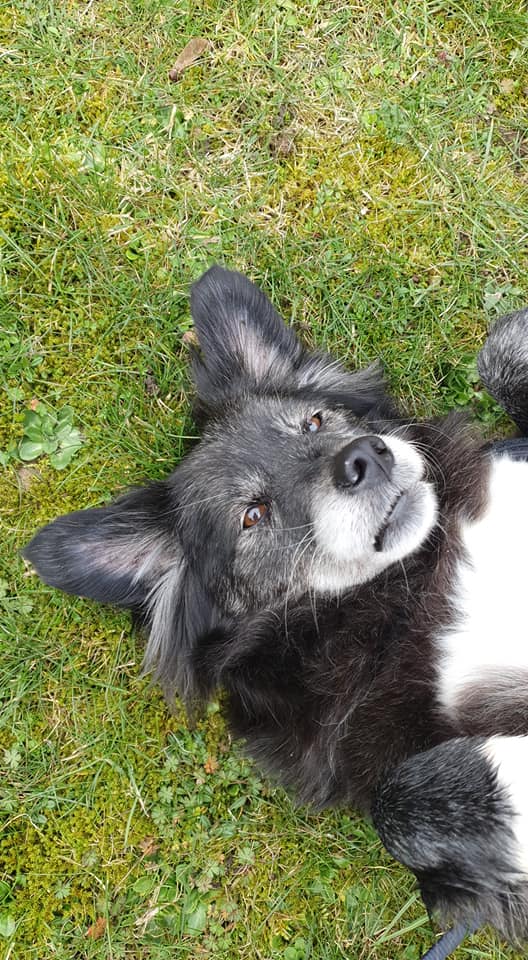
Hamlet not only found his forever home but also his favourite meadow where he can play and relax
The sensory overload, especially whilst settling in, can lead to dogs initially acting differently – often more timidly – than in the familiar environment of our shelter. This is why it is very important to us that we educate and prepare our adopters well and that we offer them thorough advice about dogs that are suited to their circumstances and lifestyle. We carry out pre-checks (and post-checks) and we discuss general aspects of adopting a dog from another country with the prospective adopters.
We have useful tips for them on how to deal with newly arrived dogs, with common behaviour patterns during the settling in period and safeguarding during walks, we talk about illnesses that cannot be ruled out based on incubation times, etc. This information is constantly updated and further refined.
However, in those cases where, for whatever reason, things do not work out in the new home, we take care of finding a new place for the dog, and even provide emergency foster homes. Under no circumstances will we allow a dog that was placed by us to end up in another shelter.
Up to now, we have been able to offer a swift solution in each of the few individual cases, where contrary to expectations, the adopters had to return a dog. Thus, we have been able to make the best of the situation in the interest of the dog.
In case of problems, we assist our adopters with help and advice and we are always available after an adoption and happy to help! On our Facebook pageyou can find some stories and photos of “happy endings” posted by the homeadopters themselves.
6. Omlet: As an NGO, how do you raise money for your animals, shelters, sterilisation projects, etc.? And how are you remunerated?
Einfach Tierschutz: In order to be able to cover the high project costs, we had to invest a lot of time in advertising and generating new supporting members to bring in enough donations. As an association that is mainly active via the fast-moving social media channels and also promotes the dogs through them, we depend on a well-functioning technical infrastructure.
The commitment of our local board is particularly important too, as it generates a lot of attention. Our local experts also have to regularly assess the socialisation of the dogs, as we place them very responsibly to ensure that dog and family get on well together later on. We invest in our social media presence, promotion via billboards, newspaper advertisements, flyers, info sheets, stickers, etc. and have thereby been able to maintain our high level of popularity and success, – which of course goes hand in hand with a further increase in administrative expenses.
7. Omlet: Is there anything else you would like to share with our readership?
Einfach Tierschutz: We would like to take this opportunity to thank you for the interview and the interest in our association and invite everyone to get an idea of our work and visit our homepage or follow our social media activities. We – and especially the animals – would be very happy about a small donation, which we would like to invest in food, vet visits/surgeries/medications, castrations or in the shelter itself, e.g. for the expansion or the cat enclosure.
We would also more than welcome new fellow members who would like to get involved in our activities (e.g. shelter travels), gladly from anywhere. You can find all information on our homepage: www.einfachtierschutz.de
Phoenix-Shelter: https://phoenix-shelter.com/
Facebook: https://www.facebook.com/groups/einfachtierschutzvermittlungen
Instagram: https://www.instagram.com/einfachtierschutz/
(You can also set up the pages in your desired language.)
Yours,
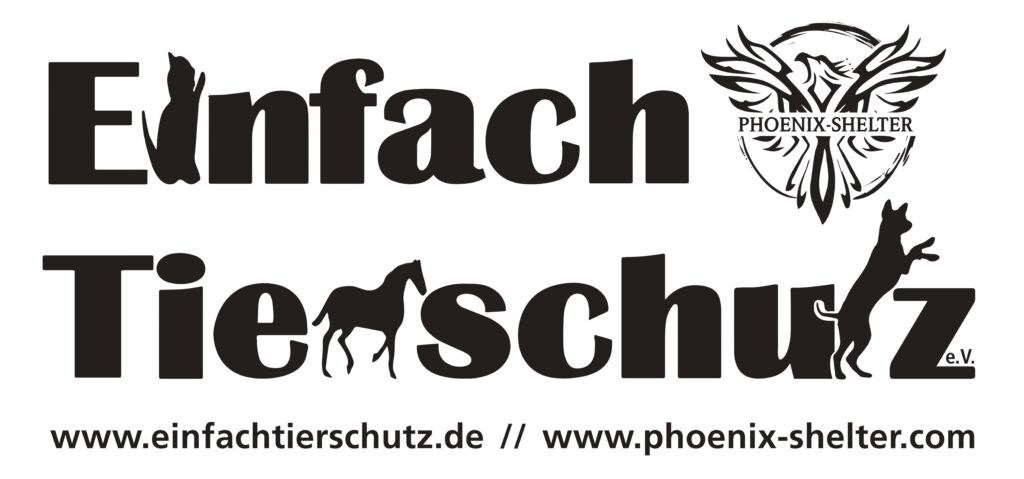
Omlet would like to thank Einfach Tierschutz e.V. for the interview and wishes them all the best for the future and that all dogs will find a great and safe new home.
Happy National Rescue Dog Day!
Note: this interview has been translated from German to English.
This entry was posted in Dogs

Some pets, including rabbits and guinea pigs, are naturally vegan. Hamsters and gerbils, although omnivorous, can thrive on a vegan diet in which the protein content is supplied by plants and vegetables. Others, including omnivorous dogs and out-and-out carnivore cats, cannot be easily pleased on meat-free diets.
All animals need to have their nutritional needs satisfied. But this does not mean you can’t have a vegan dog. Vegan cats, though, are a lot trickier.
Can my dog have a vegan diet?
 If you were to meet a species of animal for the first time and had to make an accurate guess about its diet, you would get lots of clues by looking at its teeth. The teeth of a dog, like the teeth of a bear, proclaim loud and clear that this animal is an omnivore – that is, one that eats both meat and vegetables. If you think of your dog as a domesticated wolf, you get a good idea of its natural diet.
If you were to meet a species of animal for the first time and had to make an accurate guess about its diet, you would get lots of clues by looking at its teeth. The teeth of a dog, like the teeth of a bear, proclaim loud and clear that this animal is an omnivore – that is, one that eats both meat and vegetables. If you think of your dog as a domesticated wolf, you get a good idea of its natural diet.
However, as the panda proves, a supposed meat-eater can sometimes get by perfectly well on a vegan diet. A panda’s teeth are similar to any other bear’s – long canines for meat-eating and molars for grinding vegetation. And yet pandas don’t eat anything other than bamboo. So, if a bear can be vegan, does that mean you can have a vegan dog?
The answer is yes – but it’s a yes with lots of small print! A dog requires a diet that contains the fats and proteins it would get from meat. It is dangerous to ignore this basic need and simply feed your pet with whatever you please. Some dogs have delicate stomachs at the best of times, and a low-fat, high-fibre diet can cause potentially life-threatening problems. A diet that excludes meat should never be fed to a dog without the advice of a professional pet dietician.
The collagen, elastin and keratin found in meat diets are not easily replaced by vegi equivalents. Your dog will also need the ‘long chain’ omega-3 fats found in animal products such as egg, fish and some meats. Vegan omega-3 fats are not the same as animal-derived ones.
All of which presents a headache for the vegan dog owner. There are, however, products available that claim to let your dog live a healthy, meat-free life. Before you take the plunge, it is essential to seek professional, scientific advice and guidance. Compromise is usually the best choice here – a vegan diet supplemented by some of the animal-derived essentials. Crickets, for example, can provide lots of the amino acids and keratin a vegan diet lacks, and they’re 65% protein.
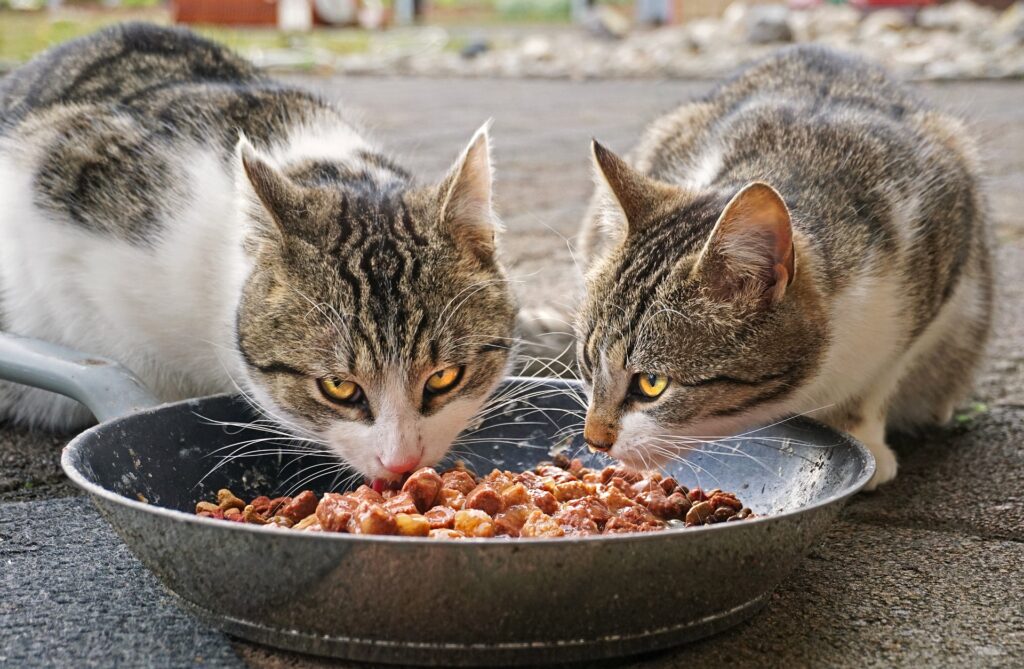
Can my cat have a vegan diet?
The compromise approach is even more important for cats. These are amongst the planet’s true carnivores, obtaining all their dietary requirements from other animals.
The main challenge with minimising the meat in a cat’s diet is that, unlike many mammals (including dogs), cats cannot produce certain proteins. They have to absorb these from the meat and fish in their diet. Amino acids are another issue – cats deficient in the animal-derived amino acid taurine, for example, usually succumb to a specific type of heart problem.
Even a fortified vegan cat food cannot be confidently recommended. Turn the situation on its head, and try to imagine weaning a rabbit onto a meat-only diet, and you get some idea of the challenge – and the ethics – involved.
There are some lab-grown ‘meat’ products in development, with vegan and vegetarian cat owners in mind. However, whether these will arrive – and remain – on the market any time soon is hard to guess.
For many vegan pet owners, there is a huge ethical issue involved in feeding the animals they share a space with. Ethics, however, include the animal’s needs too, and it’s an almost impossible issue to resolve when it comes to cats. If you are able to reduce but not eliminate the meat in your cat’s diet, that’s the safer option.
Top 10 pets for vegan households
There are, of course, plenty of other pets that don’t eat meat, or that eat some meat but can still thrive on a meat-free diet. Here are our ten favourites.
 1. Rabbits. No problems here – rabbits are happy vegans, with diets based on hay and vegetables. You could argue that the soft pellets they eject and then eat are animal products of a sort, but they are simply semi-digested vegetation.
1. Rabbits. No problems here – rabbits are happy vegans, with diets based on hay and vegetables. You could argue that the soft pellets they eject and then eat are animal products of a sort, but they are simply semi-digested vegetation.
2. Guinea pigs. Like rabbits, these wonderful little characters thrive on a 100% vegan diet.
3. Hamsters. As most hamster owners feed their pets with shop-bought hamster food, they may not be able to say exactly what the ingredients of that food are. However, vegetarian and vegan hamster foods are readily available.
4. Gerbils. Like hamsters, gerbils are omnivores that can live happily on a vegan diet. They tend to have rather delicate stomachs, so feeding them with a high-quality pellet mix is essential. Too much fresh stuff can cause problems.
5. Mice. Although they will eat pretty much anything in the wild, mice can thrive on vegan diets; but it is still best to use a food mix prepared specifically for them. This ensures that they will not be deficient in any of the vitamins and minerals they need.

6. Rats. These are the most omnivorous of rodents, but as long as you feed them a vegan mix that has been fortified with all the nutrients they need, they will thrive. Indeed, rats who eat too much animal fat tend to become fat and die prematurely.
7. Chickens. If you watch a free-range hen, it soon becomes clear that she will eat anything – grass, beetles, worms, and everything in your veg patch if you’re not careful! Most chicken feed emulates this mix of plant and animal products. However, it is possible to buy vegan chicken feed, and circumstantial evidence suggests that hens can thrive on it. However, they are likely to produce fewer eggs, and you will not be able to stop them scratching for worms and bugs, no matter how vegan the layers pellets are!
8. Budgies and parrots. Vegans will have no obstacles to face with budgies and parrots, unless the birds are being bred. Egg-brooding female birds need a protein boost, normally delivered via an egg-based food or cooked meat. Vegan alternatives are available, though.
9. Finches. Many finch species enjoy bugs and mealworms as treats, but these are not an essential part of an adult finch’s diet. These birds thrive on a mixture of seeds and fresh vegetables.
10. One for reptile fans. When you think of pet snakes and lizards, you probably have an image of dead mice or doomed crickets. However, there are a few commonly kept pet reptiles that eat a 100% vegan diet, the most popular being the Green iguana. Getting the balance of vegetables just right is very important for the animal’s health, but meat is certainly something you won’t have to worry about.
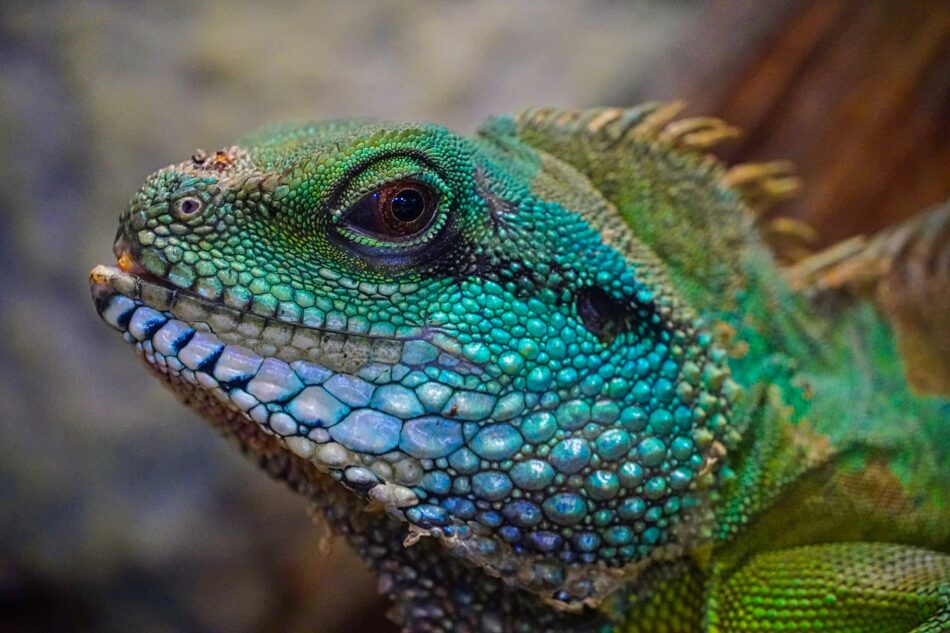
There is no shortage of choice when it comes to vegan pets. Keeping a vegan cat or dog is a much trickier proposition, though. And with all these animals, a balanced diet that matches the pet’s nutritional requirements should be your primary goal.
This entry was posted in Budgies

This article is a part of our Pride of Omlet series, a collection of amazing stories which shine the spotlight on extraordinary pets and share their selflessness, bravery, talent and compassion with the world.
-Written by Anneliese Paul

Buster was destined to chase balls on the beaches of Barry Island. He’s a lovable labradoodle with big brown eyes and a long beard. A thinker with a playful nature, he’s co-authored a children’s book with his human Natalie to bring Autism Awareness to all.
 Ethan, Natalie’s son, was diagnosed with Autism and ADHD aged four. Natalie gave up her job as a teacher to become Ethan’s full-time carer. She always had dogs as a child and, naturally, wanted Ethan to experience the same positive companionship. They went to a local farm and had the pick of three puppies. One was fast and furious, one was quiet and sleepy, and one was in-between. They picked the inbetweener and called him Buster.
Ethan, Natalie’s son, was diagnosed with Autism and ADHD aged four. Natalie gave up her job as a teacher to become Ethan’s full-time carer. She always had dogs as a child and, naturally, wanted Ethan to experience the same positive companionship. They went to a local farm and had the pick of three puppies. One was fast and furious, one was quiet and sleepy, and one was in-between. They picked the inbetweener and called him Buster.
After a few weeks at home, it was clear that Ethan wasn’t taking to Buster. He just wasn’t interested in him. So he became Natalie’s companion instead, being a full-time carer isn’t easy and Buster’s a great source of comfort on difficult days. He motivates Natalie to keep going and gives her much-needed respite, with long walks on the beach.
A couple of years after Ethan’s diagnosis, baby Isobelle was born. Isobelle’s afraid of the dark, so Buster sleeps in her room and helps her feel safe. And in the daytime, Buster is Isobelle’s playmate. They love playing dress-up together, and at the end of the day, she’ll read him a story and brush his hair.
As Buster grew, the hair on his chin got longer and longer and longer! Until he developed a fully grown, 7-inch beard. It’s not a thing you see every day, a dog with a beard. People started staring. Natalie’s used to people staring, sadly many people don’t understand Autism, and when Ethan has meltdowns, Natalie and her family have experienced staring and unkind remarks, which have been devastating.
She realised that staring at Buster was something different. When walking on the beach, Natalie was approached by people asking, “Is it real? Have you stuck it on?!” It was curious and fun and got people talking in a good way. So what does a positive ex-primary school teacher do with that? She writes a children’s book, of course! Natalie wrote a story starring Buster called ‘That Dog Has Got a Beard’.
It’s a story about being special and unique. Natalie and Buster have toured schools and libraries all over Wales and even appeared on ITV Wales, opening conversations that celebrate differences and spreading Autism Awareness through the story of Buster’s Beard.
“A lot of children don’t see disabled children, and there’s a lot of negativity around it. You want people to be accepting, and a lovable labradoodle is an excellent way to open a conversation. He looks different. He’s got a beard. But that’s wonderful, you know? “

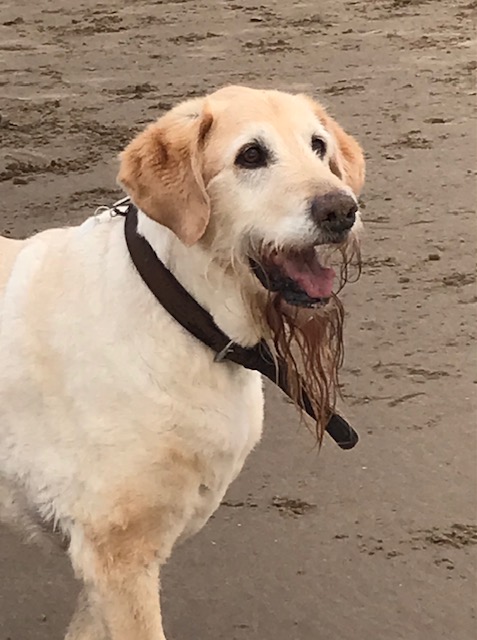
This entry was posted in Dogs
Dogtor Adem, founder and owner of Dog-Ease, is a dog behaviourist and trainer with over 15 years experience working with dog owners and their canine best friends. In this blog post, Adem provides us with helpful tips on preventing dog theft, and what to do if you experience dog theft yourself.

With dog theft on the rise, it’s only natural that we might feel worried about taking our furry family members out and about at the moment. I think most of us can agree that if anything should happen to them, we would feel devastated. So, I have put together my top tips for keeping your dog safe from theft when both at home and out and about. Following on from this, I’ve also put together some tips on what to do should you find yourself in the awful position of your dog having been stolen. I hope you never have to refer to them, but they might just help you be reunited should you find yourself in this unfortunate position.
MY TOP TIPS FOR PREVENTING YOUR DOG THEFT
START AT HOME
By this I mean you should review your current security measures at home. Start by ensuring gates and fences are secure and avoid leaving your dog in the garden unattended. You may also want to ensure your dog cannot be seen by people passing by when you are out of the home. You can do this by making them a base in a room away from any windows that can be easily looked into or even by closing the curtains on these windows when you are out.
MAKE SURE YOUR DOG IS MICROCHIPPED
It is not only law to have your dog microchipped, but it is also best practice. If your dog is ever separated from you a simple scan of their chip in their neck area should reunite you pretty quickly. Keep your dog’s microchip details up to date. It’s usually really easy to do this over the phone or online.
ADD AN ID TAG TO YOUR DOG’S COLLAR AND CONSIDER A GPS TAG ALSO
By law, your dog should have an identification tag attached to their collar when outside of your home. This makes it really easy for you both to be reunited without needing your dog’s microchip to be scanned. You could also consider attaching a trackable GPS tag to your dog’s collar. There are many on the market to choose from and these can be purchased online, if not from your local pet shop. Some also have fun features to use on a daily basis such as tracking your dog’s activity levels.
TEACH YOUR DOG THE RECALL COMMAND
Teach your dog the recall command and make coming back to you a fun game that you can play throughout your walks together. Offer a tasty treat or engagement in a game such as fetch each time they return to you. This makes them more likely to want to return to you, seeing the recall as a fun part of your walk. Head over to the Blog page of my website www.dog-ease.co.uk/blog/ to watch a tutorial on how to begin this training if you haven’t already had a chance to.
KEEP YOUR DOG’S ATTENTION
Make it fun for your dog to stay close to you on your walk if you are letting them off lead. For example, you could practise off lead heel work as you walk, offering a tasty treat as a reward for their focus, or play recall games. Taking a special toy such as a ball can also help to keep your dog’s attention and focus with them chasing and retrieving during your walk.
KEEP YOUR DOG IN SIGHT
Following on from keeping your dog’s attention, avoid letting your dog go out of your sight on a walk or leaving them unattended outside a shop, school, or even in your car. The less opportunity for them to come into contact with strangers without you also present, the better.

WALK WITH OTHERS
If possible, walk with a family member or socially distanced with a friend. You could also try to walk in public areas where other people are walking and present too. Pick times of the day where other people are likely to be around and walk in daylight if possible. If this is not possible, try to walk in well-lit areas. Safety is often found in numbers and the more people that are around the less likely you may be to be targeted.
CONSIDER TAKING ANTI THEFT DEVICES WITH YOU
Consider taking an anti-theft alarm or another similar device on your walk with you, even a whistle is better than nothing to be able to attract attention with. You could also try to keep your mobile phone handy to use if necessary, although it’s best to not allow your mobile phone to distract you from what is going on around you as you walk. See the next tip!
STAY ALERT
Following on from the tip above, stay alert and be vigilant on your walks. Watch out for any unusual activity or people in the areas you might typically walk. It is best to limit your use of any electronic devices such as your mobile, even to listen to music. The more aware of your surroundings you are, the more likely you will be to spot anything not quite right.
AVOID CLOSE CONTACT WITH STRANGERS
Avoid letting people you don’t know pet your dog or telling people you don’t know any details about you and your dog. It’s nice to be friendly but be vigilant about the information you share.
BE LESS PREDICTABLE
If you’re particularly concerned, change up your routine frequently. This makes it harder for anyone ‘watching and waiting’ to predict and plan to ‘bump into you’ on a walk.
PREP OTHERS WHO ARE RESPONSIBLE FOR WALKING YOUR DOG
If you use a dog walker, ensure you ask them what steps they are taking to avoid your dog from being stolen. You can also ask that they remain vigilant in securing your property when returning your dog to your home and ask that they look out for and alert you to any unusual activity.
USE SOCIAL MEDIA AND LOCAL NEWS TO YOUR ADVANTAGE
Check local social media pages and local news for up-to-date information on what is going on in your area. Often any worrying incidents are reported by residents with details of suspicious people and even sometimes vehicles too look out for.
BE MINDFUL OF WHAT YOU SHARE ONLINE
Sharing your location and details of your pet on non-private forums such as on non-private social media pages can alert potential thieves to your where abouts. Make sure you are mindful of what you share and where you ‘check in’, with or without your dog.
WHAT SHOULD YOU DO IF YOUR DOG IS STOLEN?
In the awful event that your dog is stolen, here are some tips to help you find and be reunited with them.
REPORT THE THEFT IMMEDIATELY
Report the theft immediately to the police and ensure it is recorded as a crime rather than as a lost pet. You should receive a crime reference number for your records.
CHECK CCTV
Check all available CCTV footage in the area your dog was stolen from to gain evidence of any people needing to be identified or vehicles that may have been involved. You might also want to check in with neighbours and those in the local area to see if anyone has any footage from their own security systems – from Ring Doorbell footage to Dash Cam footage. Anything is worth a shot and could lead to identifying something or someone.
CONTACT YOUR MICROCHIP COMPANY
Contact the company your dog’s microchip is recorded with and register your dog as stolen. If your dog is scanned by a vet elsewhere, they should then be alerted to this and your dog returned to you.
CONTACT LOCAL VETS
Contact all vets in the local area to let them know of the theft. Provide a photo of your dog if possible and include details of any markings or particular features that they have so they can identify them more easily.
MAKE THE PUBLIC AWARE
Make other people aware of the theft by putting up posters stating your dog has been stolen, with your contact details on them. You should also post a copy of such posters, or an equivalent, on social media sites. If you ensure that the settings of your post are set to ‘public’ you can ask others to share your post and reach a much wider community. The further your dog’s details are shared, the more chance you have of your dog being identified and returned to you!
DON’T GIVE UP
Don’t give up hope! Keep sharing your dog’s details far and wide. Someone somewhere might know something and help you to be reunited.
I hope you found the above tips useful. Stay alert and keep safe!
Dogtor™ Adem
Owner of Dog-ease Training & Behaviour
www.dog-ease.co.uk
This entry was posted in Dogs

It can be tricky to decide whether or not your dog should wear a collar or a harness for walks. A lot of it depends on your dog himself, from the breed to his age and activity level. No matter what type of breed you have, one thing’s for sure, they all need to go out on walks! The main two types of leash attachments that you can use for your dog are harnesses or collars.
Whether you just got a new dog and aren’t sure which to use, or you are looking to switch things up, it’s important to know the pros and cons for both dog harnesses and collars before making a decision.
Collars
Pros
Dog collars are the best when it comes to controlling aggressive dogs, puppies or dogs who are in training. It gives confidence to the owners where they can let their dog walk without any fear. It comes with many direct benefits while providing better control to the handler. Dog training is one of the most important reasons for buying a dog training collar. It is one of the first dog training tools that an owner would need. It helps your dog to successfully overcome obstacles. It also helps to guide your dog and secure his attention if it has a short attention span.
Your dog may get a bit rowdy during the walking session. It’s the dog collar that can correct its behaviour when it is misbehaving. Dogs can go on jumping fences, playing in woods, or getting into mischief; so, you should consider durable dog collars with breakaway fasteners.
The main benefit of collars is that it’s more convenient than a harness. They can be left on at all times as opposed to a harness, which should only be worn during walks and it’s much easier to snap a collar on and off than a harness.
Another great benefit of wearing collars comes with the metal ring where you can attach your pet’s ID tag or name plates with your address, your phone number, veterinarian office phone number or the tag of the dog registration organisation where your dog is registered for identification in case he or she gets lost.
Are you a fashionista or do you love to express individuality? You can even use a bow tie or bandana/scarf as an attachment for the collar.
Cons
What can go wrong when you lead a dog by the neck? Quite a lot, it turns out.
The safety of your dog’s neck plays a vital role here. If dogs constantly pulls against their collar, they can injure themselves or reduce the airflow they are getting. Some smaller breeds, like miniature dachshund or poodle, are prone to collapsing tracheas, and a rough tug on the collar can quickly turn into an emergency situation.
Other dogs’ necks are as thick as their heads, e.g. pugs and whippets, so slipping out of a collar is effortless. Even if you have a tough mutt or working dog, repeated pulling on the neck can lead to thyroid damage or spinal injuries over time. Please avoid using collars to walk dogs with medical issues such as glaucoma, a history of proptosed eye, neck injuries, or spinal malformations.
Collars should also not be used on toy breeds and brachycephalic breeds, such as Chihuahuas, Chinese Crested, Italian Greyhound, Maltese, Toy Poodle, Yorkshire Terrier, Bulldogs, French Bulldogs, Boston Terriers, Pugs and Boxers.
Harnesses
Pros
The main benefit for using a dog harness instead of a dog collar is the control you have over overly excited dogs. If it comes to safety and security, harnesses are generally better at preventing accidents because they fasten more securely around your dog’s body and are simply the most secure, and most comfortable way to hook your dog up to his leash. It covers your dog’s chest, shoulders, and upper back, which disperses pressure over a larger surface area whereas collars give you better control over your dog. While dogs can easily slip out of their collars and potentially run into traffic or another person’s yard, harnesses offer much more security and safety.
A good harness will reduce pulling, increase your control over your pup, and decrease stress on his neck and joints. Bonus points: because it secures closer to the dog’s centre of gravity, a harness gets tangled in the leash less and helps prevent jumping.
There are different kinds of harnesses, starting from cool, cute or practical, such as bags where you can put some treats or eco-friendly waste bags
When it comes to specific breeds or diseases, a harness has a better function for your dog:
- Brachycephalic breed: These breed dogs typically have flatter faces, “shortened head” and refers to the short nose and flat face of dogs like Pugs, Shih Tzus, Chihuahuas, Chow Chows, Pekingese, French Bulldogs or Bulldogs. Respiratory issues may be better managed with a harness.
- Tracheal collapse: This is a medical condition where the trachea will fold in on itself causing trouble breathing and a cough. Please avoid using a collar because it applies further pressure and can even worsen the condition.
- Risk factors for spinal problems: A condition called intervertebral disc disease (IVDD) makes long-bodied breeds such as dachshunds very prone to slipped disks. By using a harness you can take pressure off the neck and back and help prevent further damage.
- Orthopaedic disease: Dogs with orthopaedic disease can have a hard time getting up to walk so a harness can help you get them up and move around more easily.
Cons
Harnesses are just less convenient than collars for hoomans. A collar can just slip on, but harnesses take more time to fasten.
Harnesses can be uncomfortable: Harnesses are bulkier than collars, so they can be more uncomfortable for your dog. Some dogs really don’t like wearing harnesses, so it can take some time for them to get used to it.
Harnesses may not have a place for carrying an ID tag. It’s best to get a harness with a ring for a tag—or use both a collar with a tag and a harness when out walking.
If your dog wears weather protection or due to some illness needs to wear clothes, a harness might be a bit more of a disadvantage than a collar. The clothes might cover the harness ring(s), so that you’re unable to put a leash on. Alternatively you can attach the harness over the clothes but make sure -in general- it’s neither too tight nor too loose.
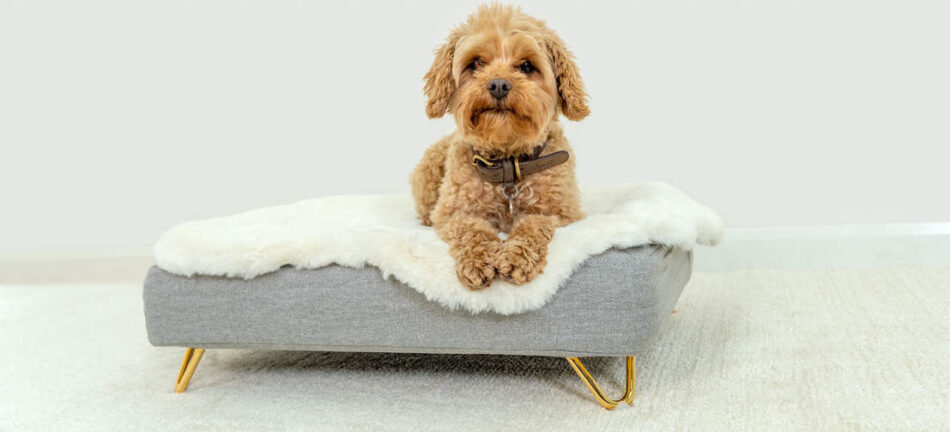
Summarising
So, collar or harness – which one is now the better option for your dog? There is no general answer to this question as it always depends on the breed and health of your pooch and the use of the item. But please, always keep in mind:
- Collars are less restrictive on movement, which is good for working dogs who are running around all day. Collars are also better for dogs that don’t pull and can calmly walk by your side.
- Harnesses are better for overly excited dogs as you have more control over them.
- Smaller dogs and brachycephalic breeds should avoid wearing a collar.
- It is absolutely advisable to get your puppy used to both, collar and harness.
- If you want to transition an older dog or even a pup from collar to harness be patient – the adjustment phase may take some time. Bring some treats along on your first few harness walks to distract your dog from that unfamiliar feeling, as well as associate the change with positive rewards.
- It also depends on the use of the item. If you want to have a walk with your buddy or take a ride with him in your car (to fasten the seatbelt), it is recommendable to use a harness. If you just let him out in the garden or take him to your friends’ house, a collar is totally fine – same goes with dog kennels.
To sum up, harnesses are usually the best choice for walking dogs because they don’t put pressure on the neck. But collars are generally more comfortable and have a place to hold an ID tag. At best, let your buddy wear both: If you can’t attach a tag or name plate to the harness, use a collar for the ID tag and a harness for the leash.
If you’re looking for the perfect fit for your pooch, you can visit our page about collars or harnesses.
This entry was posted in Dogs
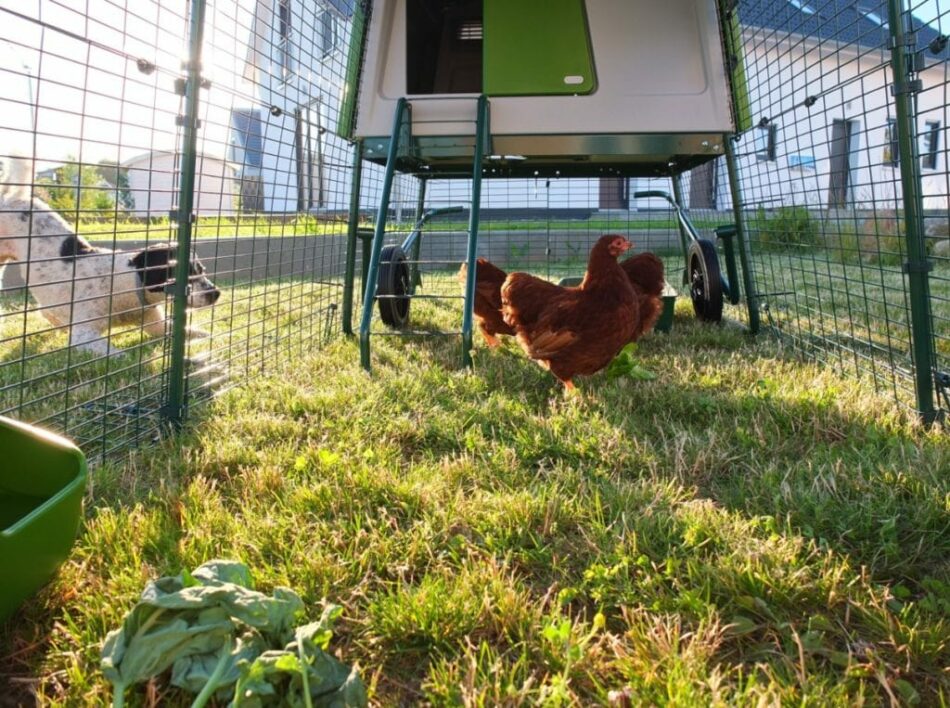
You can keep chickens with other pets when the proper preparations and precautions are in place. Some pets like cats and dogs may have an innate prey drive that chickens can trigger, so it’s important to take introductions slowly to ensure success. With these tips, you’ll be able to confidently introduce your current pets to your chickens, or introduce new pets to your existing flock with confidence.
Keeping chickens with dogs
Dogs are the most common pets in the world, with millions kept as pets across the country. So, if you’re among the many dog owners, adding chickens to your family is possible once you consider your dog’s temperament and trainability.
Assessing your dog
If you’re a dog owner, the first thing to consider is their temperament. Different dog breeds may also react differently to birds as part of their nature. For example, breeds like Labrador Retrievers or German Shorthair Pointers may become easily excited around birds due to their natural hunting and retrieving drives. Other breeds that may have increased prey drives include:
Regardless of their breed, if your dog becomes excited or overly curious around small animals, their behaviour will likely carry over to chickens. If your dog loses their mind over the birds at your backyard feeder, or drags you to investigate the park ducks on your evening walks, they’ll likely stress out your flock – and themselves.
Dogs without a prey drive or with little interest in birds will likely not pose a problem to your chickens, but all dogs react differently when new pets enter their territory. Usually, most dogs will adjust to the new backyard occupants just fine after an acclimation period. You will likely see your dog expressing interest in your chickens at first – hanging around and sniffing the coop. They may even express a desire to interact with your chickens through playful postures and behaviours. Understanding your dog’s body language around your chickens will help you determine what their relationship will be like.
Chickens are prey animals, and can be hurt easily. Dogs cannot play with chickens as they would with other dogs or even other pets. It’s important to teach your pup that chickens are fragile friends – not toys or something to hunt.
Teaching dogs to get along with chickens
Unless leashed walks make your dog overly excited, their first encounter with your chickens should be done with a dog collar and lead. Make sure their collar is tight enough that they don’t slip out, but not so tight that it’s uncomfortable. Walk your dog up to your chickens’ enclosure and let them sniff. Maintain a tight leash until you see your dog’s reaction, and allow the lead more slack slowly to reinforce good behaviour.
Let your dog watch you spend time with your chickens. This should be done with your chickens in the safety of a strong walk in chicken run. If your dog does more than sniff or hang around the run, take a step back and approach their interaction from a different angle.
It could take several weeks for your dog to fully accept your chickens. Some other ways to help your dogs adjust to your chickens include:
- Setting up chicken fencing around the outside of your flock’s run for your dog to observe them at a distance.
- If your dog has a run or playpen, place it next to your chickens’ run and slowly decrease the distance over several days until they are side-by-side.
- Reward your dog with their favourite treats each time they are calm around your chickens.
Make sure to never leave your dog unattended with your chickens – especially in the beginning. Even if they can’t get into the run with them, an excited dog’s barking can easily stress your flock out.
Keeping chickens with cats
Cats are more difficult to train than their canine counterparts, and are decidedly less predictable in their behaviour. But the good news is that most cats don’t see a large hen as potential prey the same way a dog might. Most cat owners will agree that their cats show little to no interest in their chickens. In fact, cats and chickens have a somewhat symbiotic relationship.
Birds and their feed attract rodents, which a cat would much prefer over your hens. So, when your cat is able to patrol your chickens’ surroundings, chances are good that any potential rodent problem will be nipped in the bud.
Some cats may show increased interest in your hens. This largely depends on your cat’s breed and temperament. Cats will pose a greater threat to chicks rather than grown hens, but by keeping your flock in a strong chicken coop and run, you’ll ensure they stay safe from your cat.
Keeping chickens with guinea pigs
It may be tempting to keep some cute cavies in with your chickens, but in reality it’s not wise. Chickens will likely pick on them, and with their short legs, guinea pigs can’t get away from them quickly. Their dietary requirements are also very different, and your chickens may eat your guinea pigs’ food in favor of their own, which means neither animal will be getting the nutrients they need. If you have cavies and want to house them near your chickens, it’s best for them to have their own guinea pig hutch and run.
Keeping chickens with rabbits
Rabbits on the other hand are fast enough to fend for themselves against chickens, and if raised together from a young age, can do well around chickens. Still, they require their own dietary needs and clean sleeping quarters. They don’t roost like chickens, so they’ll need their own burrowing space in the run or under the coop.
The easiest way to achieve this is by adding walk in chicken run partitions. This will allow you to create “rooms” for each species to ensure they all get what they need. You can open the partition doors to allow everyone to be together whenever you’d like, or create a third space as a common area.
Remember to try to give each species as much space as possible in their respective areas to make them feel safe and comfortable.
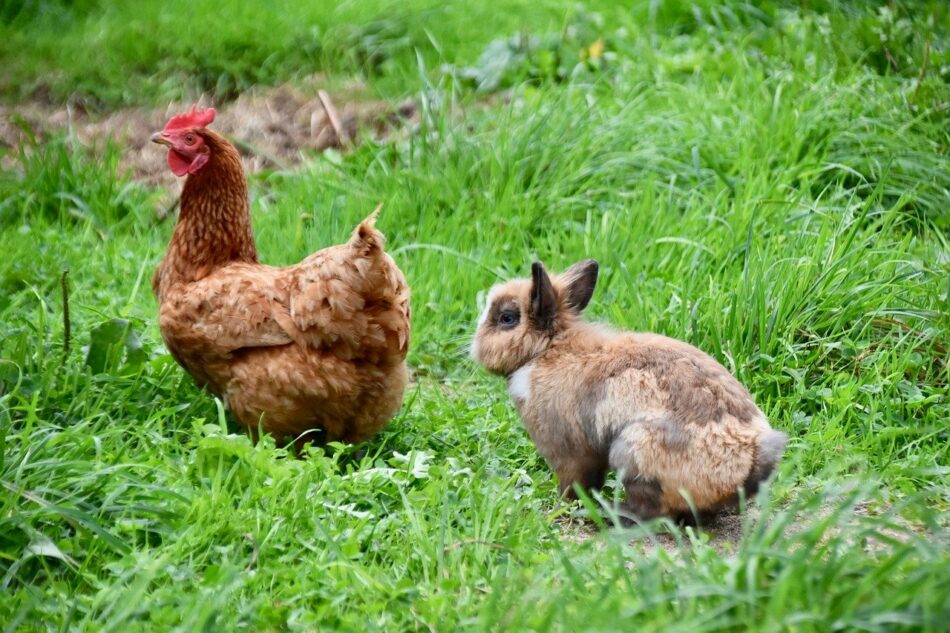
Chickens and other pets
Chickens can also mix happily with goats, and with female ducks (males will tends to bully them). Ironically, they do not mix with birds in an aviary. They will eat anything that falls to the aviary floor, but they will also happily peck the other birds whenever they can and may attract rats and mice, which will cause problems for the smaller birds.
If you live in a rural setting, you can keep chickens with other barnyard animals. Chickens mix happily with:
- Goats
- Sheep
- Cows
- Alpacas or llamas
- Pigs
- Female ducks, guinea fowl, peacocks, geese, or pheasants
Any other avian species kept with chickens should be docile and preferably female, as males can bully hens. Smaller birds like quail or pigeons will likely get pecked at by chickens, so it’s best to stick with larger birds as run-mates. Small pets like hamsters, gerbils, turtles, or frogs should never be kept with chickens – they will be pecked at and killed.
Omlet and your pets
Omlet has all of the pet products you need to keep your furry and feathered family members healthy and happy. Having multiple types of pets is exciting, and through our line of chicken coops, chicken runs, and walk in run partitions, you’ll be able to create a safe haven for all of your animals to enjoy. And, by knowing that Omlet products are protecting your flock, you can rest easy knowing that you’ve provided them with the best chicken housing solutions available.
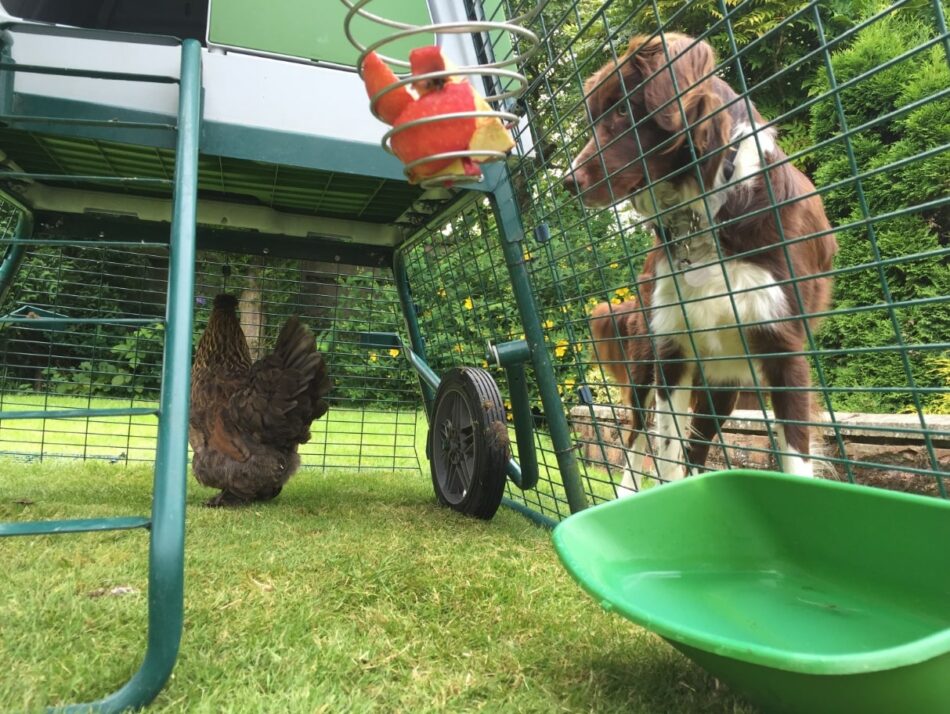

This entry was posted in Budgies

This article is a part of our Pride of Omlet series, a collection of amazing stories which shine the spotlight on extraordinary pets and share their selflessness, bravery, talent and compassion with the world.
-Written by Anneliese Paul
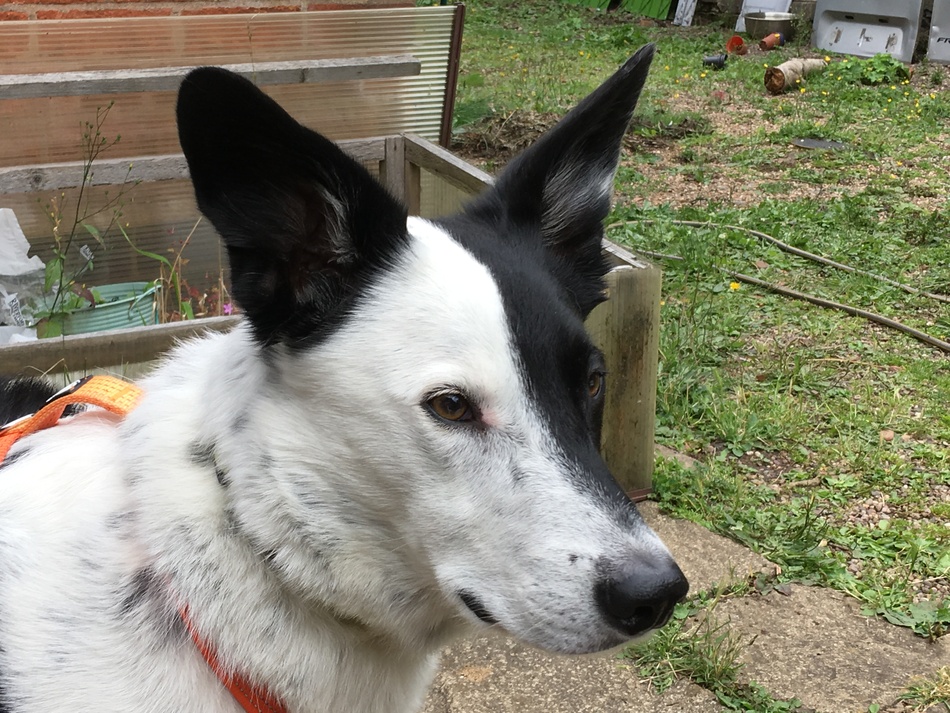
On paper, Kipper wasn’t exactly what Angela wanted. After years of behavioural challenges, he’s become the best-behaved blood donor and saved over forty dog’s lives. Kipper’s turned out to be Angela’s perfect match.
When Angela’s house was burgled, the first thing the police said was, “Get a dog.” Because a dog barks, and people are less likely to enter your home uninvited. But working as a teacher, Angela felt she couldn’t look after a dog, especially not an active breed like a collie.
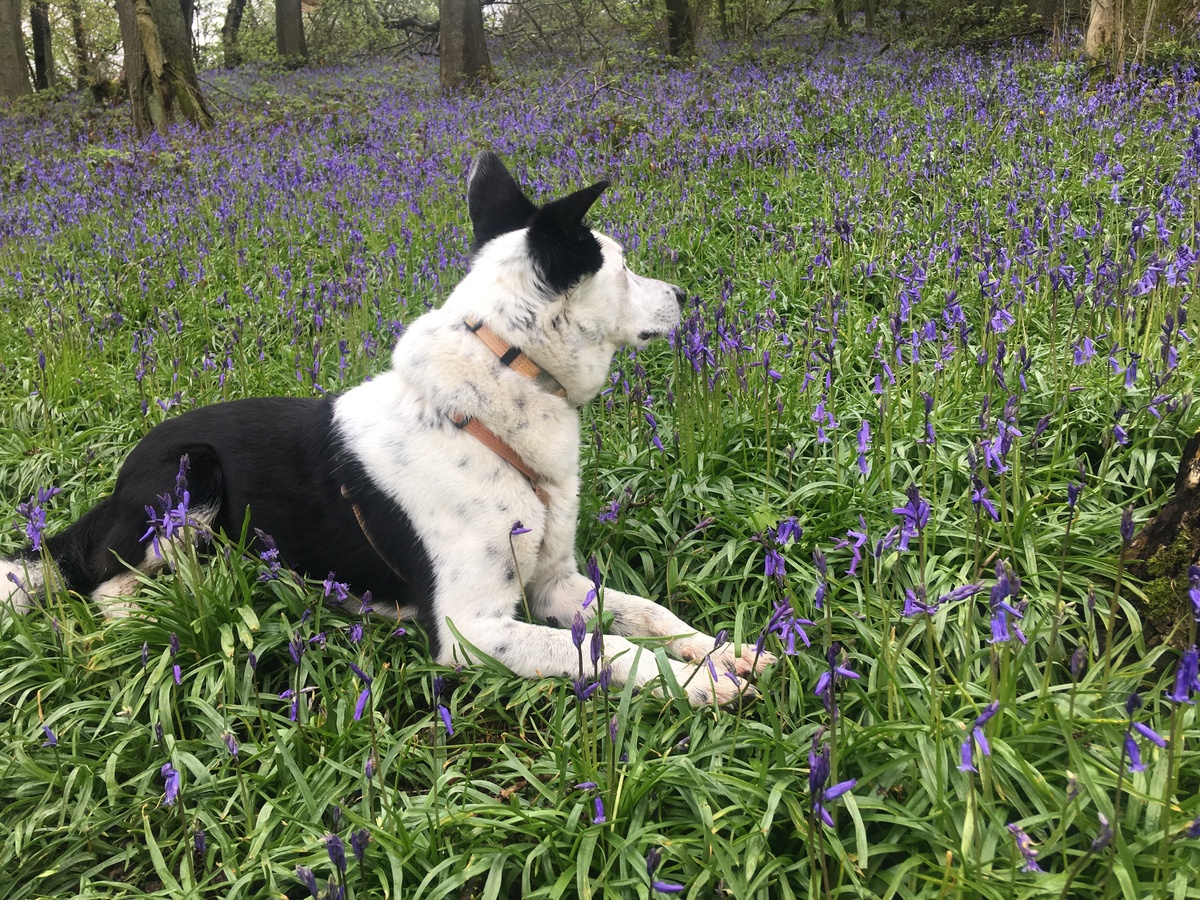
With fond memories of the collie she grew up with, she spent a long time talking to the Border Collie Trust, and they helped her find Kipper. He was an eighteen-month-old Irish stray and had been rehomed multiple times. Being a collie, Kipper had a lot of energy. On paper, he didn’t look right for Angela.
But the Border Collie Trust thought he was the perfect match and persuaded her to meet him. So, she went to the rescue centre to get to know him. Angela could tell he was fantastic with humans, which was really important. So she took him for a walk and fell in love with him. A few weeks later, she brought him home to start their new adventure.
Angela had prepared a lovely kennel and run in the garden for Kipper to spend half the day in. The plan was at lunchtime; he would be walked by a professional dog walker and then left in the house in the afternoon until she got home from school.
Kipper turned out to be hard work, boisterous and disruptive. He destroyed the house and was what Angela describes as ‘over the top’. In the evening, after a long day at work, Angela would go to tie up her shoes for a walk, and he would bite her hair, not in an aggressive way, just incredibly overexcited. It used to take them twenty minutes just to get to the front gate. It was exhausting.
But Angela had experience with Border Collies, she knew he had incredible intelligence, and he just needed things to do. Her teaching instincts kicked in, and with support from the Border Collie Trust, she began what would turn out to be life-changing behaviour training for both her and Kipper.
At first, it was simply stopping and waiting for him to calm down whenever he did something that was ‘over the top’. Then Angela needed to tackle the chewing at home. She started by leaving him for five minutes, going to the front gate, standing across the road, then coming back in and praising him for being good. Angela worked out Kipper’s motivations (toys and food) so that she could effectively train him.
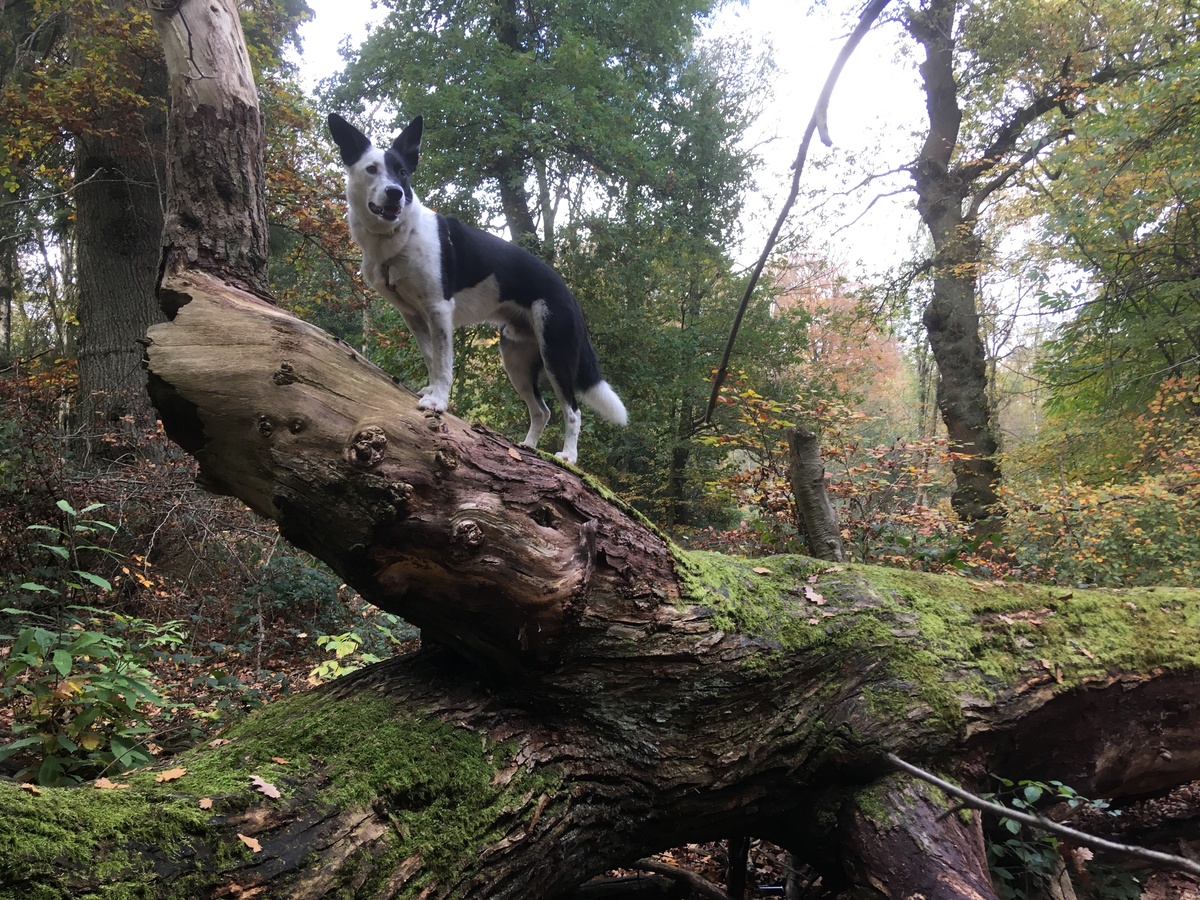
“He is so clever,” says Angela “, That he will work out. What am I being asked to do? What is the reward on offer, and is it worth it? And if it isn’t worth it, he won’t do it.”
Over time he made progress, and his behaviour slowly improved. Angela worked hard with him, and as his obedience improved, their bond grew, so did the trust between them.
Kipper lives on the edge of the countryside and occasionally chases livestock, so he has to wear a muzzle on long walks. But incredibly, Angela can leave him alone, unmuzzled with the chickens in her garden. His behaviour at home has transformed so dramatically that Angela is confident Kipper will do whatever she asks him to. Angela has even watched a big bolshy chicken trying to steal Kipper’s bone!
“The chicken was getting closer and closer and closer, trying to peck at his bone. All Kipper did was pick up the bone and walk away.”
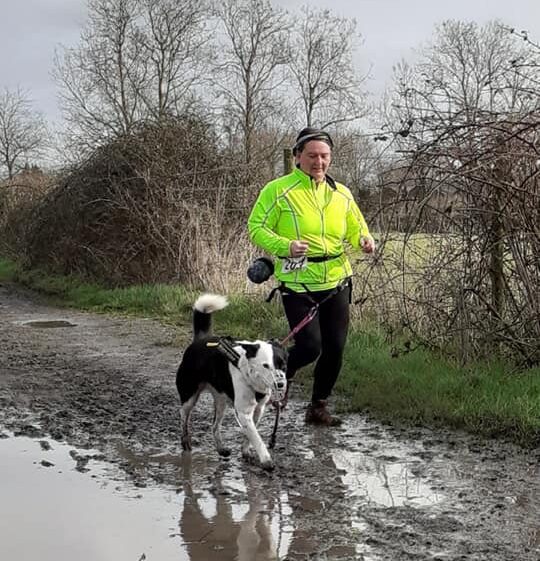
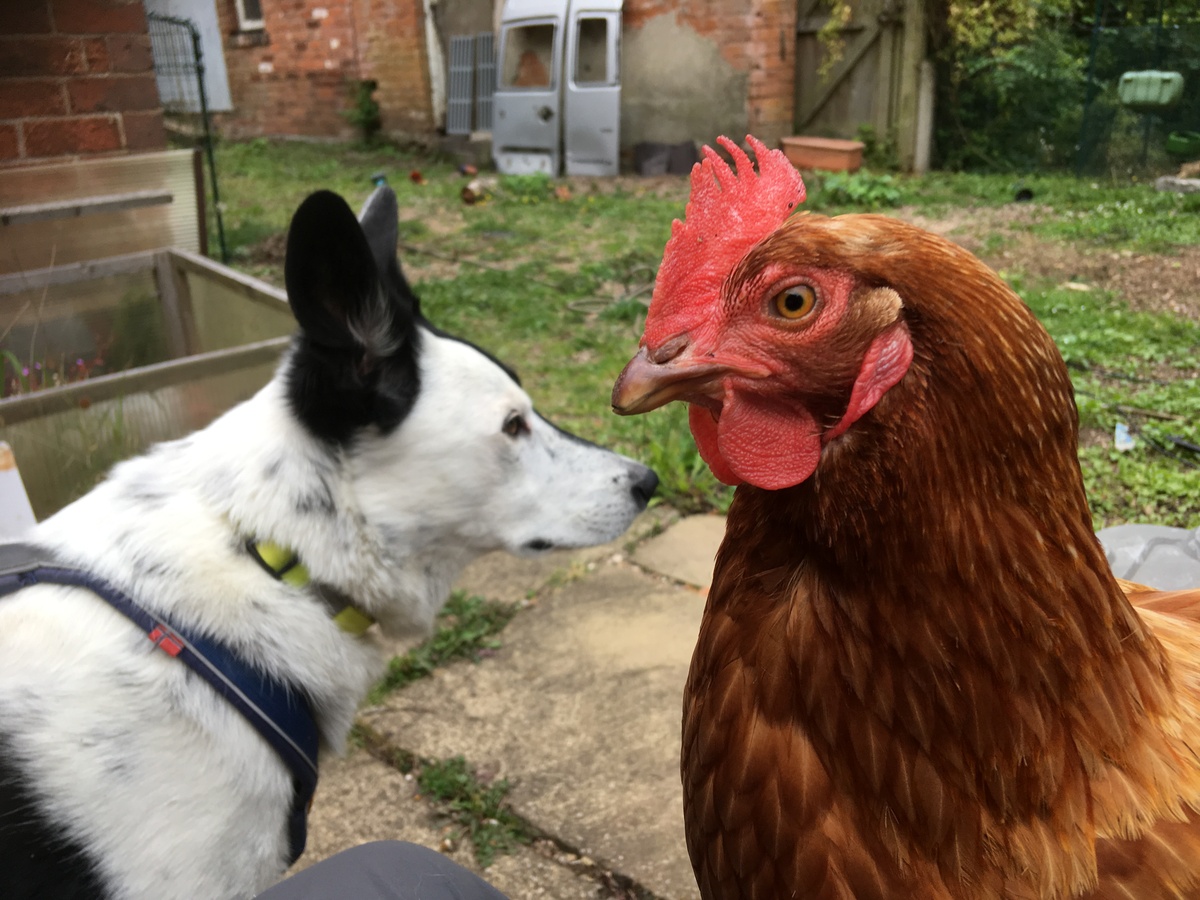
With good obedience at home, they started to have fun together. Kipper achieved Gold in the Kennel Club Good Citizen Dog Scheme and got to the Kennel Club Starters Cup Final in 2017, an agility competition for beginners. The activity and the mental work was fantastic for him, and they both made new friends, travelled to new places and shared memorable experiences.
But when Kipper had to have his dew claws removed, he couldn’t do his agility work, and the lack of exercise led to frustration. Angela, always on the lookout for ways to develop Kipper’s potential, discovered CaniCross. Cani sports are a whole range of sports to nurture the bond between dogs and their owners and are particularly beneficial for dogs with behavioural issues.
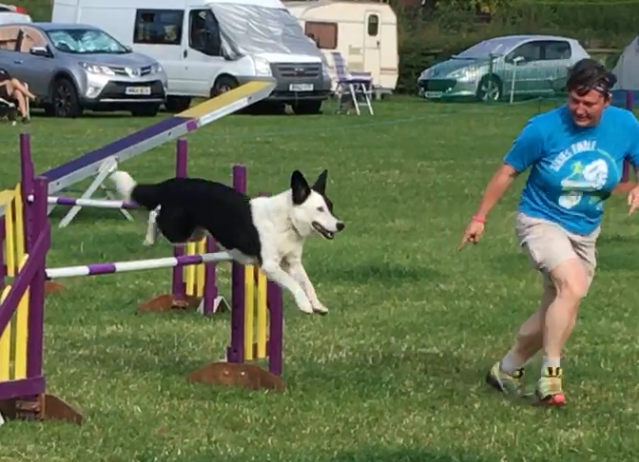
Taking part in cross country runs and triathlons, Angela and Kipper were getting fit together and making strong friendships with a whole community of like-minded dog lovers.
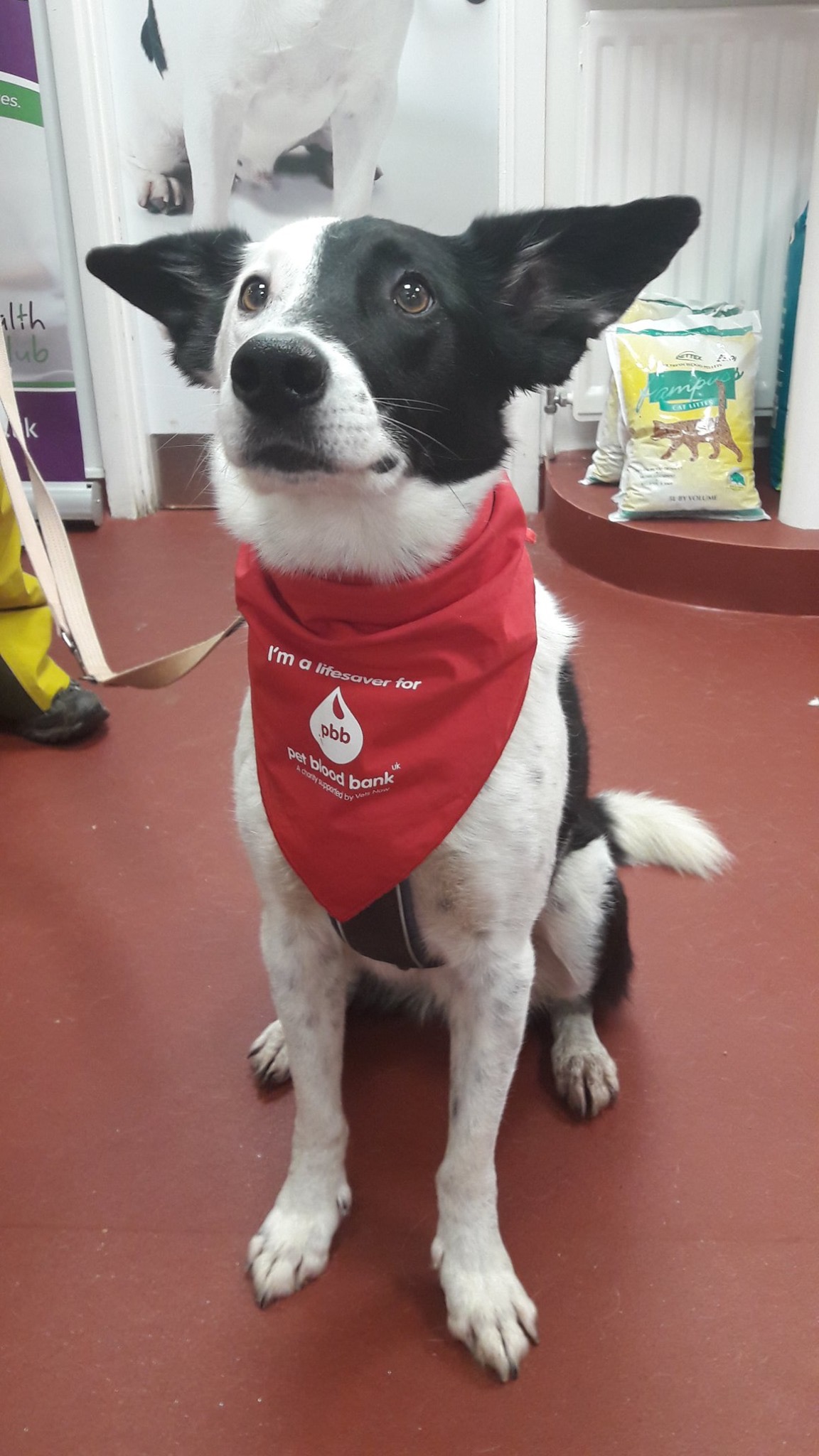
One of their friends introduced them to the pet blood bank. Angela was keen to give back to the dog community, but he was under the 25kg minimum weight. However, as he matured, his muscle development changed. As soon as he’d gained enough weight, Angela registered Kipper as a donor and proudly took him along to his first session.
But Kipper was terrified. He had to have a little piece of fur shaved and couldn’t stand the sound of the clippers. Once again, Angela turned to training. The blood bank advised using an electric toothbrush to get him used to the vibrating sound. Over time, using his favourite soft cheese as a treat to reward good behaviour, Angela gently got him used to sound until she was sure he knew it wasn’t going to harm him.
Finally, Kipper was ready to give blood, perfectly behaved. He’s now on his tenth donation, and with a rare negative blood type, his blood is a perfect match for any dog. With every donation providing blood for up to four other dogs survival, Kipper has helped save forty dog’s lives.
Kipper and Angela have experienced so much together. Pushing each other to do better, they’re a winning team. Motivating each other to get on with life and do something good, to make friends together. As Angela says,
“Not every dog would suit me, and not every owner would suit him, but the Border Collie Trust got it right. We were meant to be.”

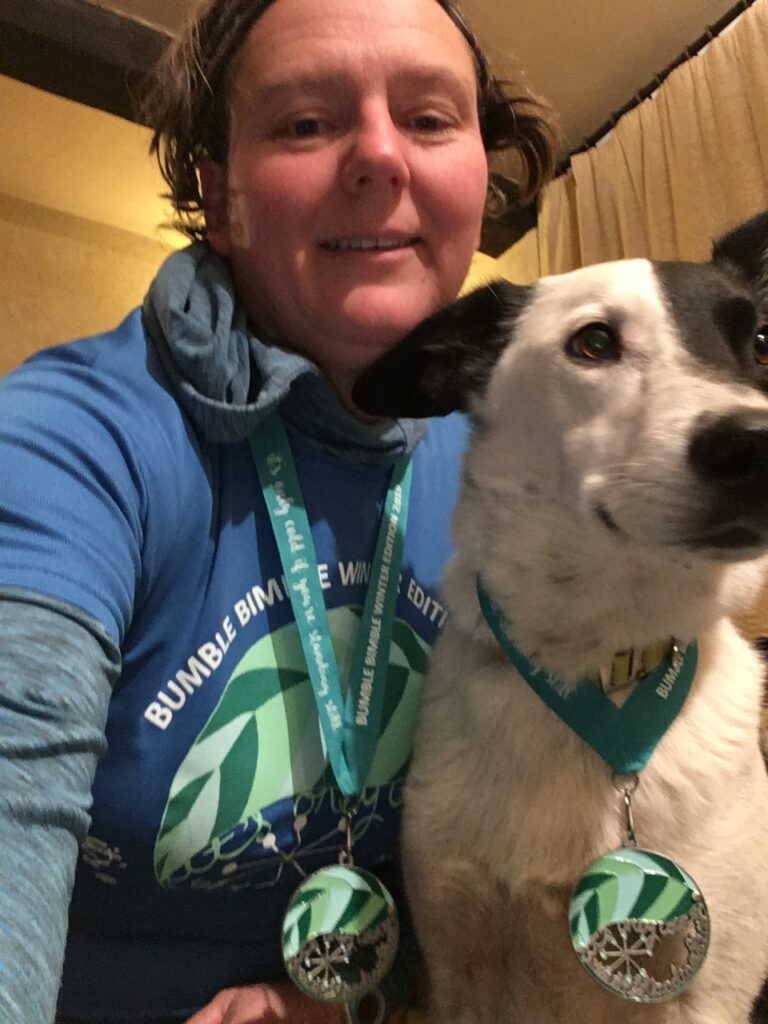
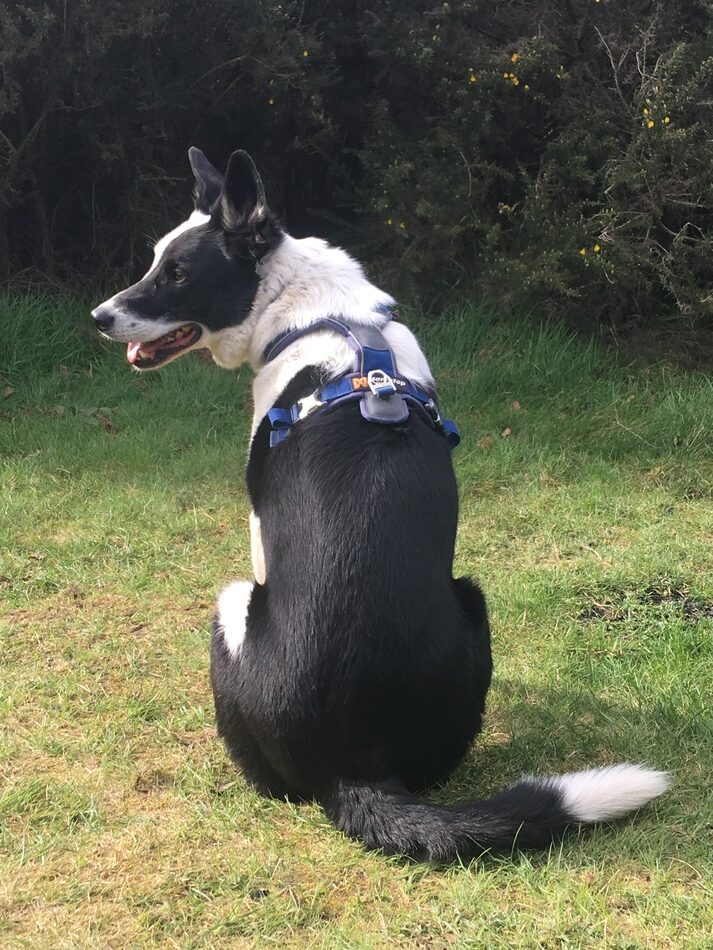
This entry was posted in Dogs
Teaching your dog tricks is not that difficult. Your pet is very intelligent and in fact, training a dog is much easier than training other animals! We know that sometimes it’s hard to find inspiration and ideas, so we’ve put together a list of 5 must-do tricks to teach your dog!
Dogs are very attentive to their environment, they are able to learn several commands and quickly assimilate what you tell them. However, you will need to be patient and rely on rewards and encouragement to get results. Never spend more than 10 minutes on an exercise per day and make sure you are in a good mood to praise your dog. Frustration must be put aside or your dog will feel it and may perform less well.
Do you know that the tricks and exercises taught to your dog will stimulate him physically and mentally? They also allow you to enrich the bonds that unite you.
This list is far from exhaustive and we assume that your dog already knows “sit”, “down” and “stay”.
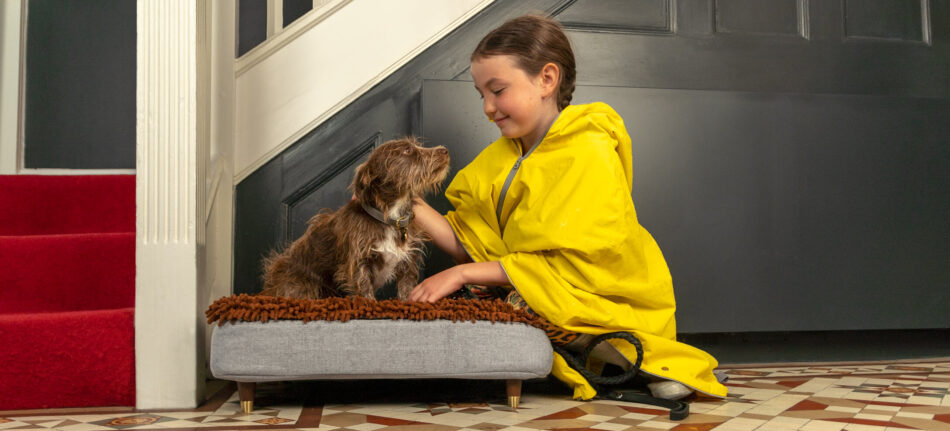
1- Pawing or shaking hands
As you may have noticed, dogs sometimes instantly raise their paws when they ask for food. So this trick is not fundamentally complicated to teach your dog. You just have to find the right word, the right signal to give your dog to obey.
Omlet’s tip: Keep the treat in your hand, show the treat to your dog and tell him to wait. Slowly lower your hand and when your dog lifts his paw, make the sound you want to associate with the command. “Shake”/”Paw” is an easy sound for your pet to remember, so use short words. Add emphasis to the word and enthusiasm. Once the dog has the treat in his mouth, congratulate him with a pat.
Gradually, you won’t need to lower your hand too much. Each time you repeat this command, make sure you raise your hand a little higher so that your dog’s paw is raised to chest level. Repeat with the same paw.
Once your dog has mastered this command, you can train him to lift the second paw. However, the sound/word should be different from the previous one. Use the word “other” for example.
Afterwards, you can easily teach him the “high five” command. You will have to show him your palm and encourage your dog to go even higher with his paw. Once your dog does this, reward him.
2- Rolling over
This is a trick that many owners want to teach their dog, but many don’t know how.
Omlet’s tip: First, you get your dog to “lie down”. Place a treat in your hand and let your dog smell the treat without giving it to him. The goal during this exercise is that your dog should not get up. If it does, don’t get upset and try again.
Use your hand to guide your dog. You must make the movement and the trajectory that you want your pet to follow. Use your hand to turn your dog’s head and make a backward movement. As your dog tries to turn his head to grab the treat, he will end up rolling. Repeat the exercise several times, but don’t spend more than 15 minutes doing it. You can come back to the exercise later in the day.
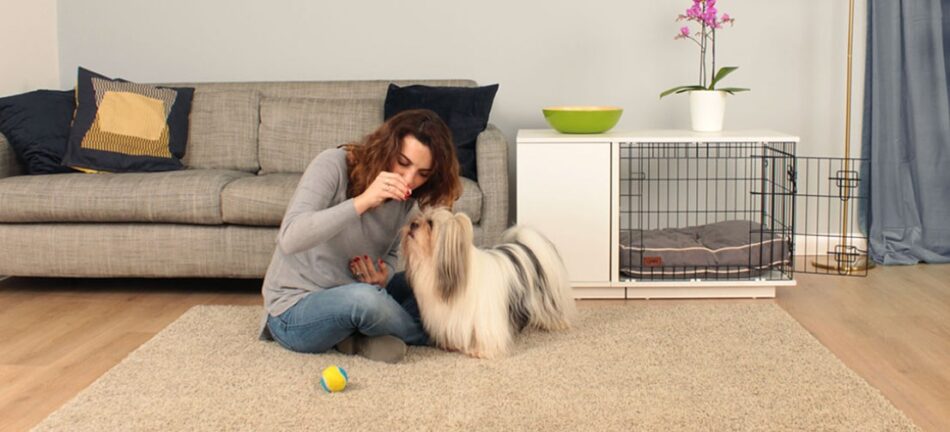
3- Speak
This command can be easy to learn for expressive dogs but a little more complicated for calm dogs.
Omlet’s tip: Excite your dog a little with your voice. Ask him to sit and put a treat in your hand. Wave your hand but don’t give him the treat. Repeat the word/command you want him to learn several times, perhaps “bark” or “speak”. Wait for him to bark or whine. After a few seconds give him the treat and praise him. If you want your dog to calm down, repeat the word “quiet” or “enough” and walk away.
Never encourage or praise your dog when he barks out the window or at people. Barking can be frightening to some people.
4- Dance
Good news, your dog can also learn to dance! Maybe he can even dance better than you…
However, this trick is easier to learn for small dogs. Larger dogs have a harder time standing on their two hind legs. This trick is also not recommended for dogs with back problems.
Omlet’s Tip: Ask your dog to sit. Put a treat in your hand and put your hand over your dog’s muzzle slightly backwards. Your goal is to get your dog to sit on his hind two legs, and he will only do so if he sees no other way to get his treat. Once both front legs are up, praise and encourage your dog. Repeat this trick several times until he can quickly stand on both paws.
Once he does, you can move on to the next step. When your dog is on his two feet, hold the treat and move your hand in a small circle over his head. After a few seconds your dog should be able to twirl or at least move both paws on the ground. As you do the movement, remember to say the word you want to associate with the command. In this case that word could be “dance”. Once your dog has taken several small steps, give him the treat and praise him.
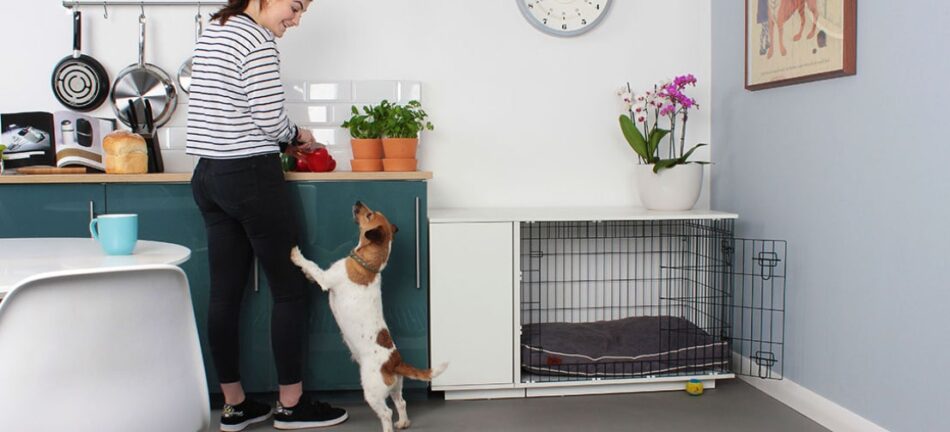
5- Playing dead
This is a challenging trick! It’s a great way to impress those around you, although it is not so easy to teach your dog, especially if he tends to be dynamic. However, nothing is impossible, you will just need more patience.
Omlet’s tip: As with the “roll over” command, have your pet lie down. Take a treat in your hand and put it over his head. Once your dog turns around, stop the process by asking your dog to stop moving. Repeat this process several times until your dog understands that it should not move. It is very important to say the word you want to associate with the command. For this trick it could be “Bang”.
This trick is not easy to describe, a video is sometimes worth a thousand words. We advise you to watch this video to teach your dog to play dead.
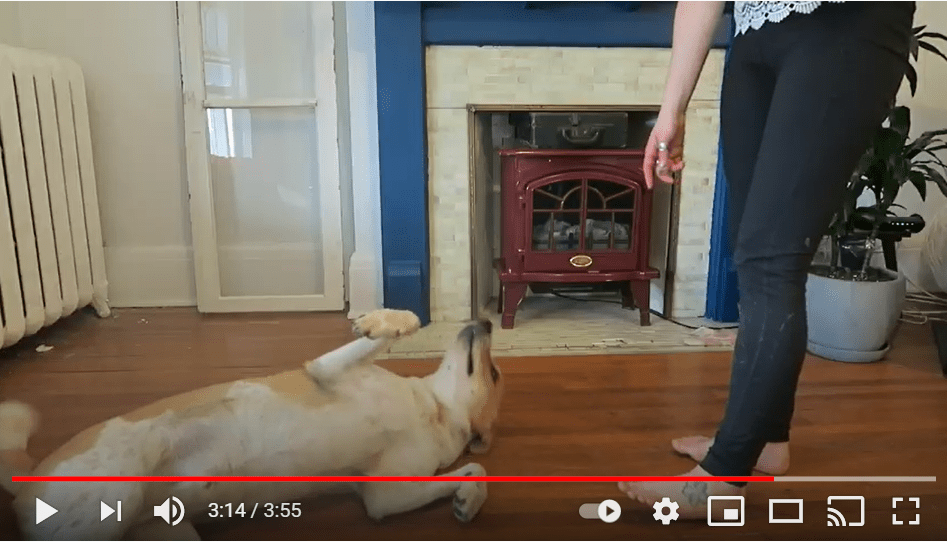
No matter what tricks you teach your dog, patience is the key and the only way to succeed and achieve your goals. Never forget to congratulate and encourage your pet. Finally, never force him. If he doesn’t want to learn a command or doesn’t understand it, don’t be obstinate. If you are afraid of doing the wrong thing, many resources are available on Youtube. Don’t hesitate to watch several videos to find the best technique for your dog.
Tag us on social media if you manage to do one of these tricks with your dog. We would love to share your pet’s achievements.
Tag us on Instagram omlet_uk or send us your video to the following address: blog@omlet.co.uk
This entry was posted in Dogs

This article is a part of our Pride of Omlet series, a collection of amazing stories which shine the spotlight on extraordinary pets and share their selflessness, bravery, talent and compassion with the world.
-Written by Anneliese Paul
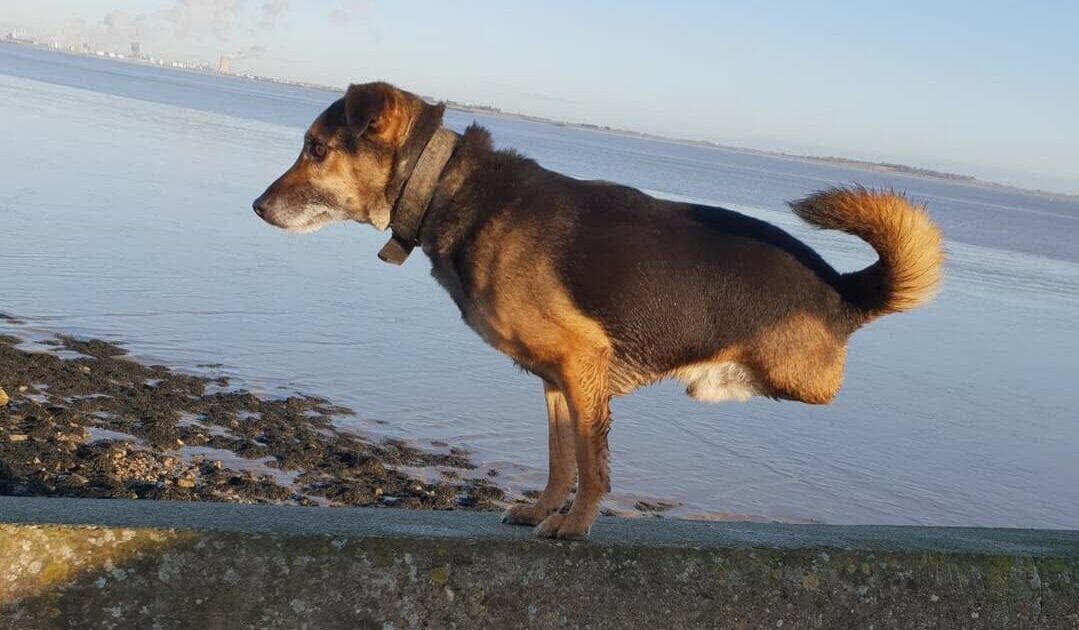
Jerry’s a cheeky, playful and boisterous rescue dog from Romania who can do a handstand! He landed on his feet when Shena gave him a home and inspired her to start a rescue centre specialising in disabled animals.
When you see a dog with two legs, what do you think? Many people would give up on them. On her first visit to the vet, Shena was advised to put Jerry to sleep. But Shena couldn’t do that.

Shena had four dogs, worked for the NHS in cancer care and was studying for a degree in Social Care. Then a friend sent her a video of a puppy in Romania, and her heart melted.
Jerry was paralysed, an unwanted street dog who had probably been hit by a car and left for dead. Shena couldn’t get the image out of her head, “What’s one more?” she thought and decided to bring him home.
The first time Shena met him, Jerry jumped out of the car, a bundle of energy. It was love at first sight. He was a playful six-month-old puppy. Shena’s four dogs gladly accepted him, and he slotted into the pack straight away.
Having been through so much already, it was perhaps no surprise that after the operation to remove his hind legs, Jerry bounced back again even after a few falls while he perfected his balance.
Jerry can walk on two legs around the house and garden and manages well, but he wears his wheels on walks. They’re made from plumbing pipes, and at first he was a bit wobbly on them, but with a couple of days of practice, he was charging off. Now on his 3rd set of wheels, Jerry loves chasing balls. Nothing can stop him. Shena thinks he’s probably faster than the other dogs!
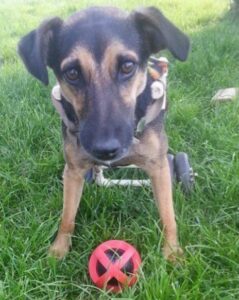
Jerry kicked off a following on Shena’s social media and people started coming to her for advice. So in 2013, just a few months after getting Jerry, Shena and her husband Ian decided to set up an animal sanctuary that specialises in disabled animals. Because of their disabilities, many of these animals wouldn’t be here without the second chance that the animal sanctuary PUDZ gives them. Jerry has two more two-legged dog friends and a special relationship with Flo, another Romanian rescue.
In total, they look after over 170 animals, including dogs, cats, rabbits, chinchillas, guinea pigs, chickens, ducks and turkeys. And until last year, Shena and Ian did it all from their North Lincolnshire home. Jerry’s such an inspiration that they have recently raised enough money to buy a one-acre plot of land, so that they can give more disabled animals like Jerry the happy lives they deserve.
“Jerry changed my life completely. We don’t give up on people who are disabled, so why should we give up on animals? Everyone deserves a chance in life.“
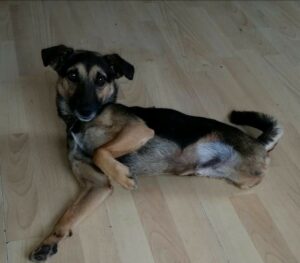
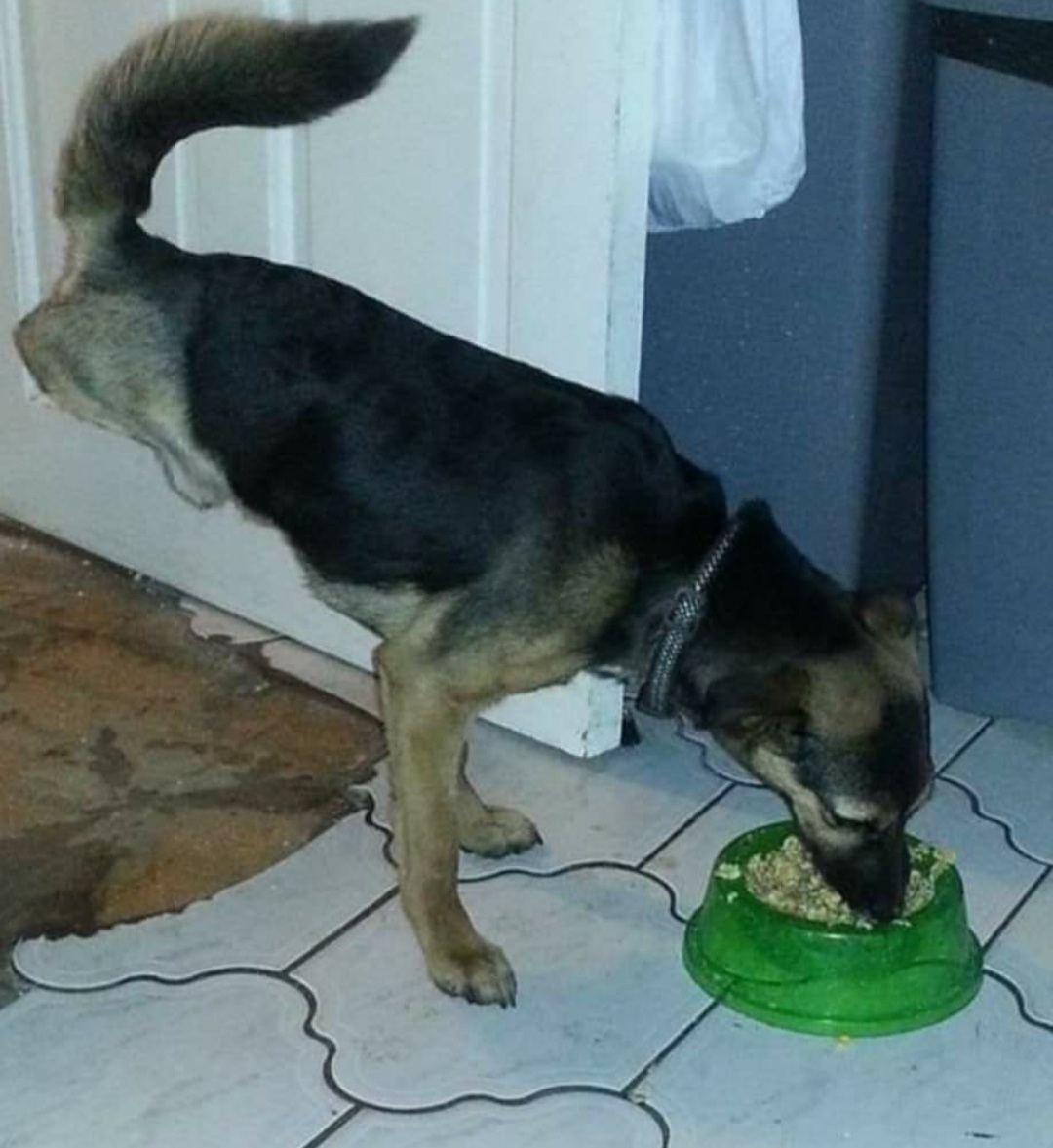
This entry was posted in Dogs

 If your boss has given the green light to bring your dog to the office, there might be some things to check before going ahead. Of course, check in with your colleagues that no one has allergies or is afraid of dogs. If other colleagues are also going to be bringing their dog to the office, consider whether your dog will be okay with that, or if it could cause some stress.
If your boss has given the green light to bring your dog to the office, there might be some things to check before going ahead. Of course, check in with your colleagues that no one has allergies or is afraid of dogs. If other colleagues are also going to be bringing their dog to the office, consider whether your dog will be okay with that, or if it could cause some stress. 
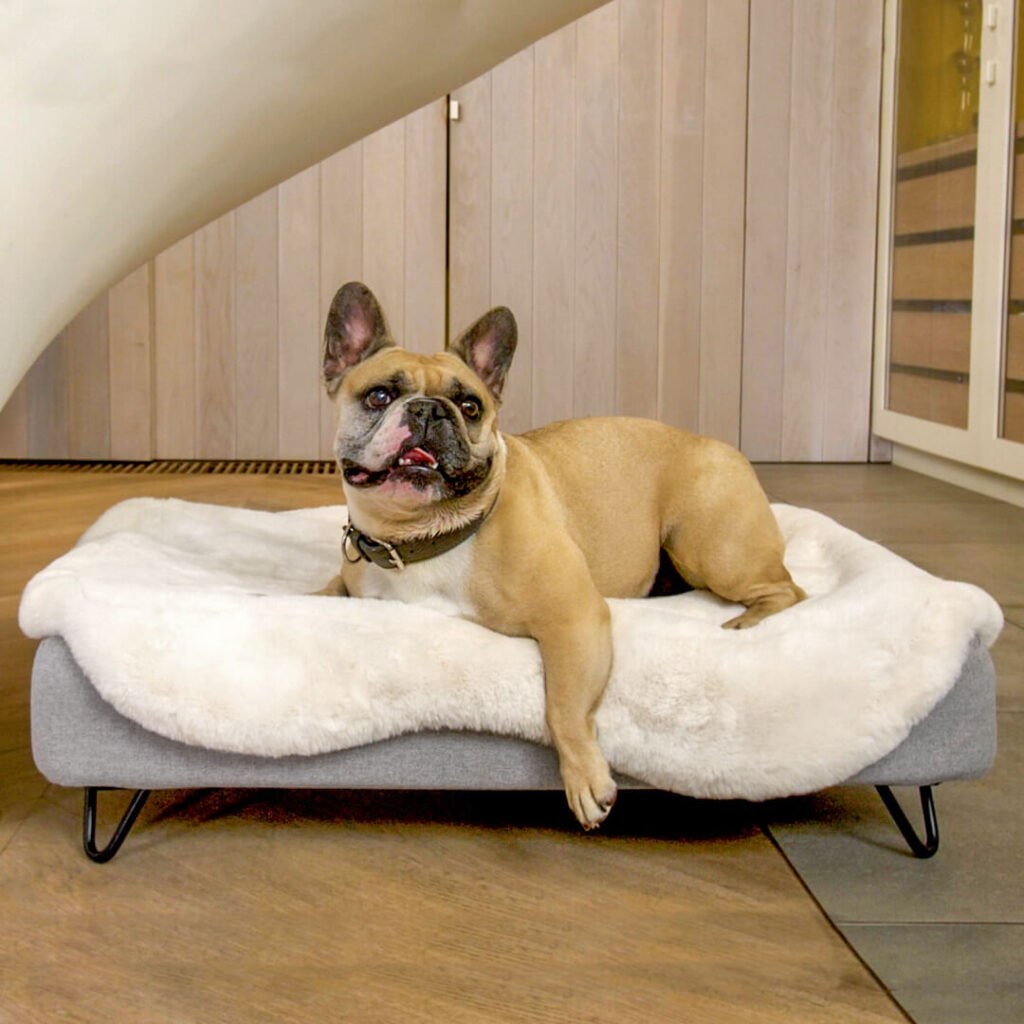
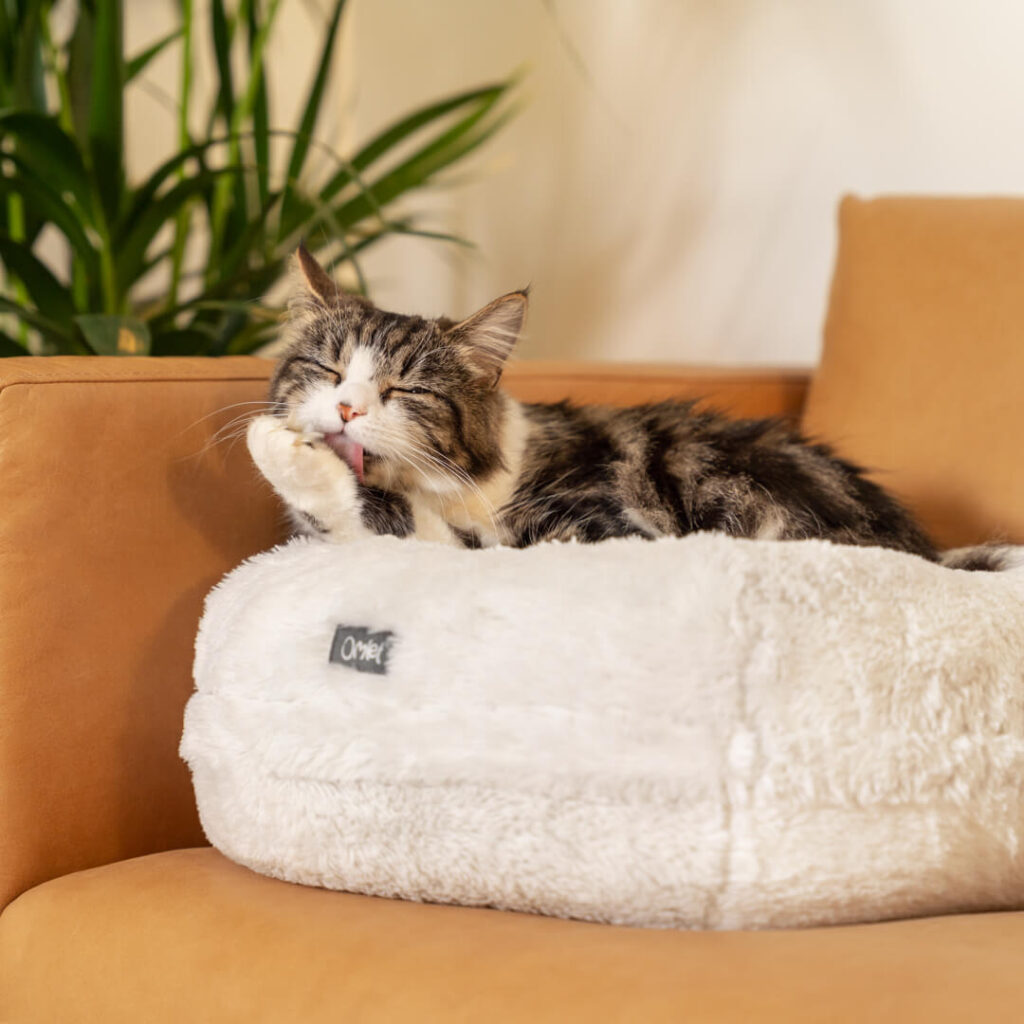

















 A dog who has been taught positive behaviour will be your best friend – fun, affectionate and reliable. It’s straightforward teaching your dog this canine version of positive thinking, but it won’t happen unless you lead the way.
A dog who has been taught positive behaviour will be your best friend – fun, affectionate and reliable. It’s straightforward teaching your dog this canine version of positive thinking, but it won’t happen unless you lead the way. 2. Affection
2. Affection 4. A trip to a favourite place
4. A trip to a favourite place 1. Keep it simple
1. Keep it simple 3. Quality time
3. Quality time












 20.05. – National Rescue Dog Day! We would like to use this special date to address animal welfare, shelters, the hard work they have to face every day and of course everything about the topic of adoption.
20.05. – National Rescue Dog Day! We would like to use this special date to address animal welfare, shelters, the hard work they have to face every day and of course everything about the topic of adoption.  Einfach Tierschutz:
Einfach Tierschutz:  Since spring 2020, we have been running our second shelter especially for puppies, the “Phoenix Puppy Shelter”, where up to 50 puppies and young dogs are fostered, cared for and prepared for placement in a family on an area of 2,000 m². In addition, we were able to realise a long-cherished wish in 2020 with the construction of the cat house on our premises and thus also provide our cats with safe and species-appropriate accommodation.
Since spring 2020, we have been running our second shelter especially for puppies, the “Phoenix Puppy Shelter”, where up to 50 puppies and young dogs are fostered, cared for and prepared for placement in a family on an area of 2,000 m². In addition, we were able to realise a long-cherished wish in 2020 with the construction of the cat house on our premises and thus also provide our cats with safe and species-appropriate accommodation.



 Castration Marathon in Baraila, Romania
Castration Marathon in Baraila, Romania

 We recently had our first big tombola where our members purchased lots from us in order to have the chance to win many great prizes from generous donors. The proceeds went directly to the shelter.
We recently had our first big tombola where our members purchased lots from us in order to have the chance to win many great prizes from generous donors. The proceeds went directly to the shelter. 





 If you were to meet a species of animal for the first time and had to make an accurate guess about its diet, you would get lots of clues by looking at its teeth. The teeth of a dog, like the teeth of a bear, proclaim loud and clear that this animal is an omnivore – that is, one that eats both meat and vegetables. If you think of your dog as a domesticated wolf, you get a good idea of its natural diet.
If you were to meet a species of animal for the first time and had to make an accurate guess about its diet, you would get lots of clues by looking at its teeth. The teeth of a dog, like the teeth of a bear, proclaim loud and clear that this animal is an omnivore – that is, one that eats both meat and vegetables. If you think of your dog as a domesticated wolf, you get a good idea of its natural diet.
 1. Rabbits
1. Rabbits



 Ethan, Natalie’s son, was diagnosed with Autism and ADHD aged four. Natalie gave up her job as a teacher to become Ethan’s full-time carer. She always had dogs as a child and, naturally, wanted Ethan to experience the same positive companionship. They went to a local farm and had the pick of three puppies. One was fast and furious, one was quiet and sleepy, and one was in-between. They picked the inbetweener and called him Buster.
Ethan, Natalie’s son, was diagnosed with Autism and ADHD aged four. Natalie gave up her job as a teacher to become Ethan’s full-time carer. She always had dogs as a child and, naturally, wanted Ethan to experience the same positive companionship. They went to a local farm and had the pick of three puppies. One was fast and furious, one was quiet and sleepy, and one was in-between. They picked the inbetweener and called him Buster.



























